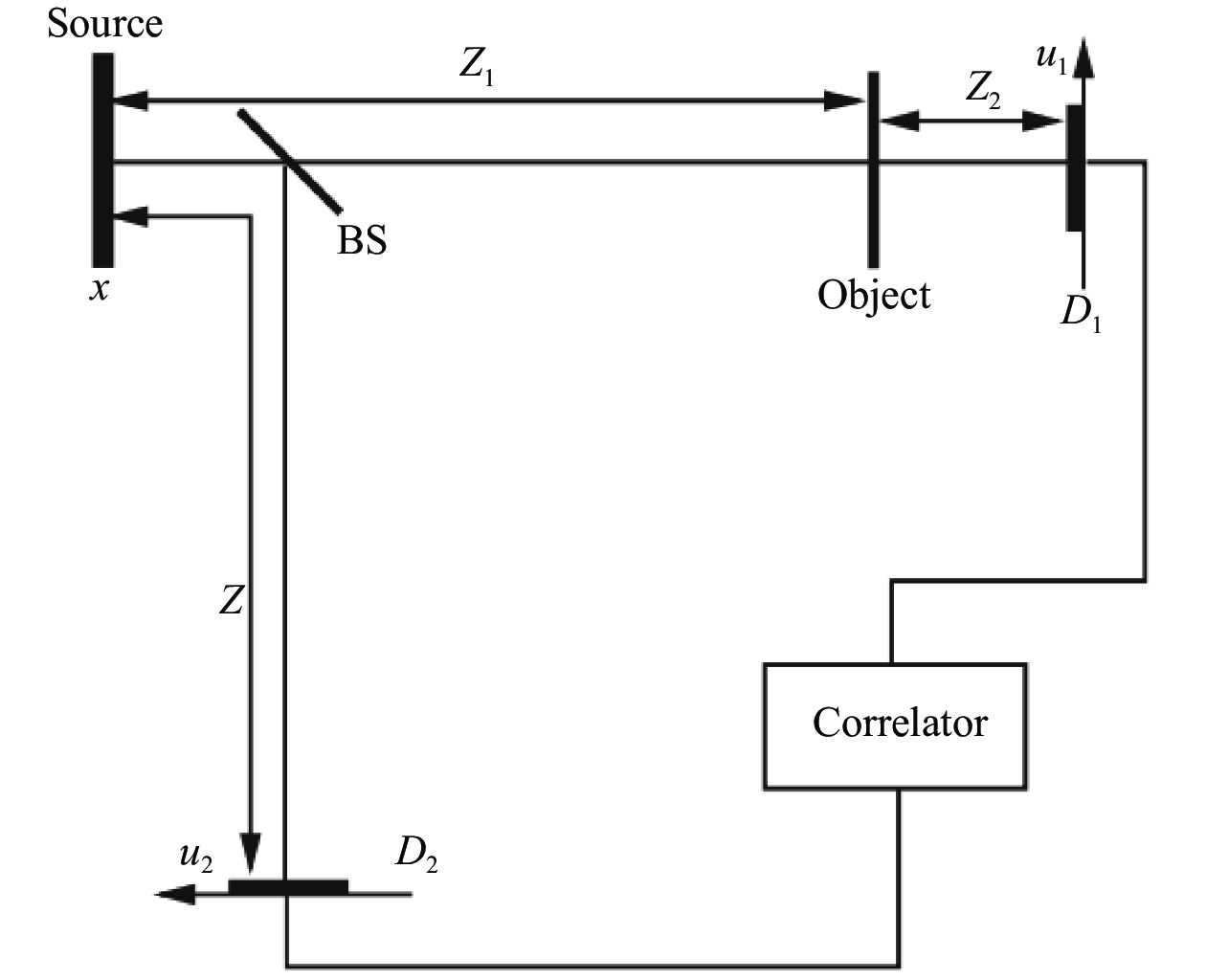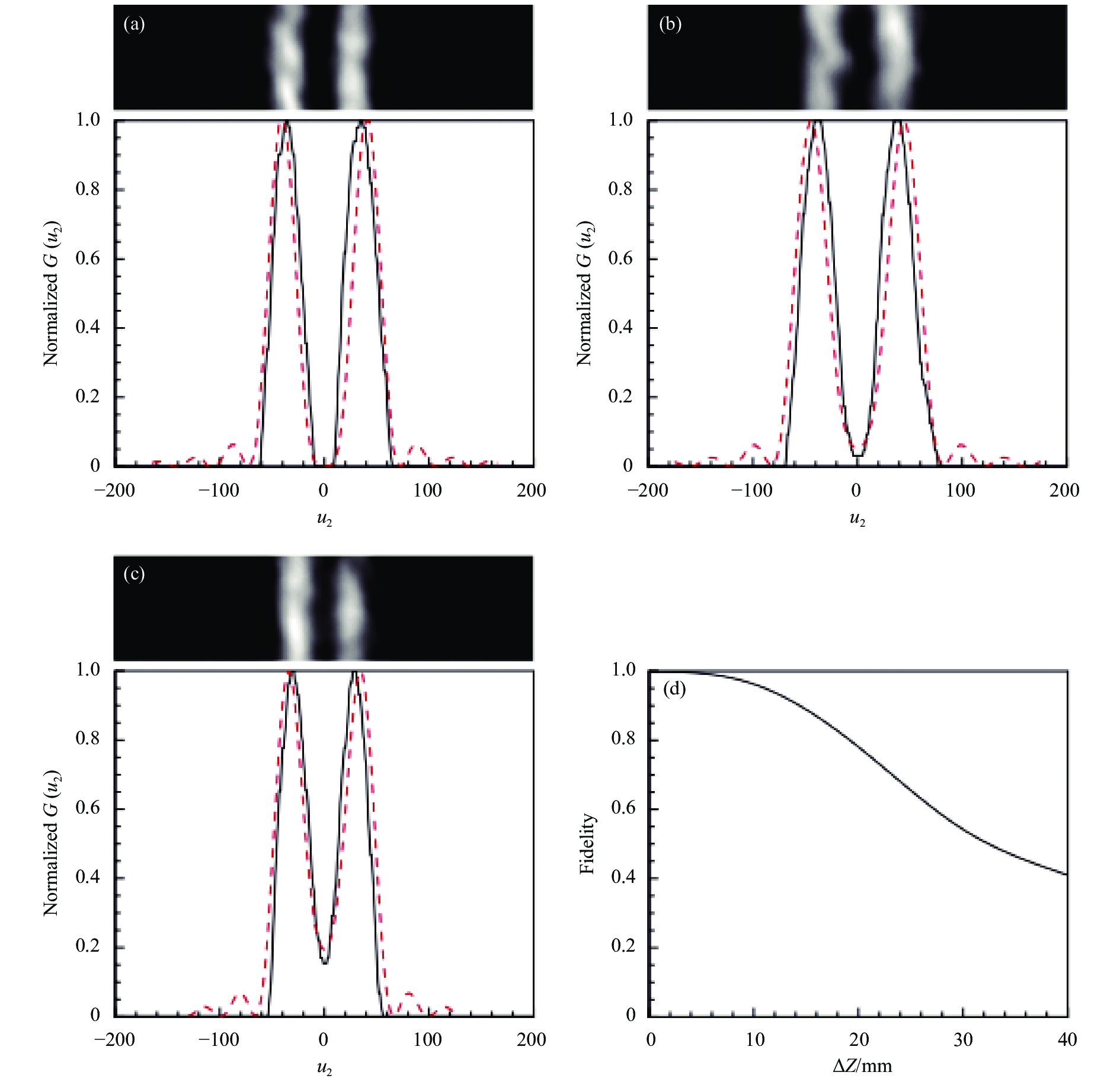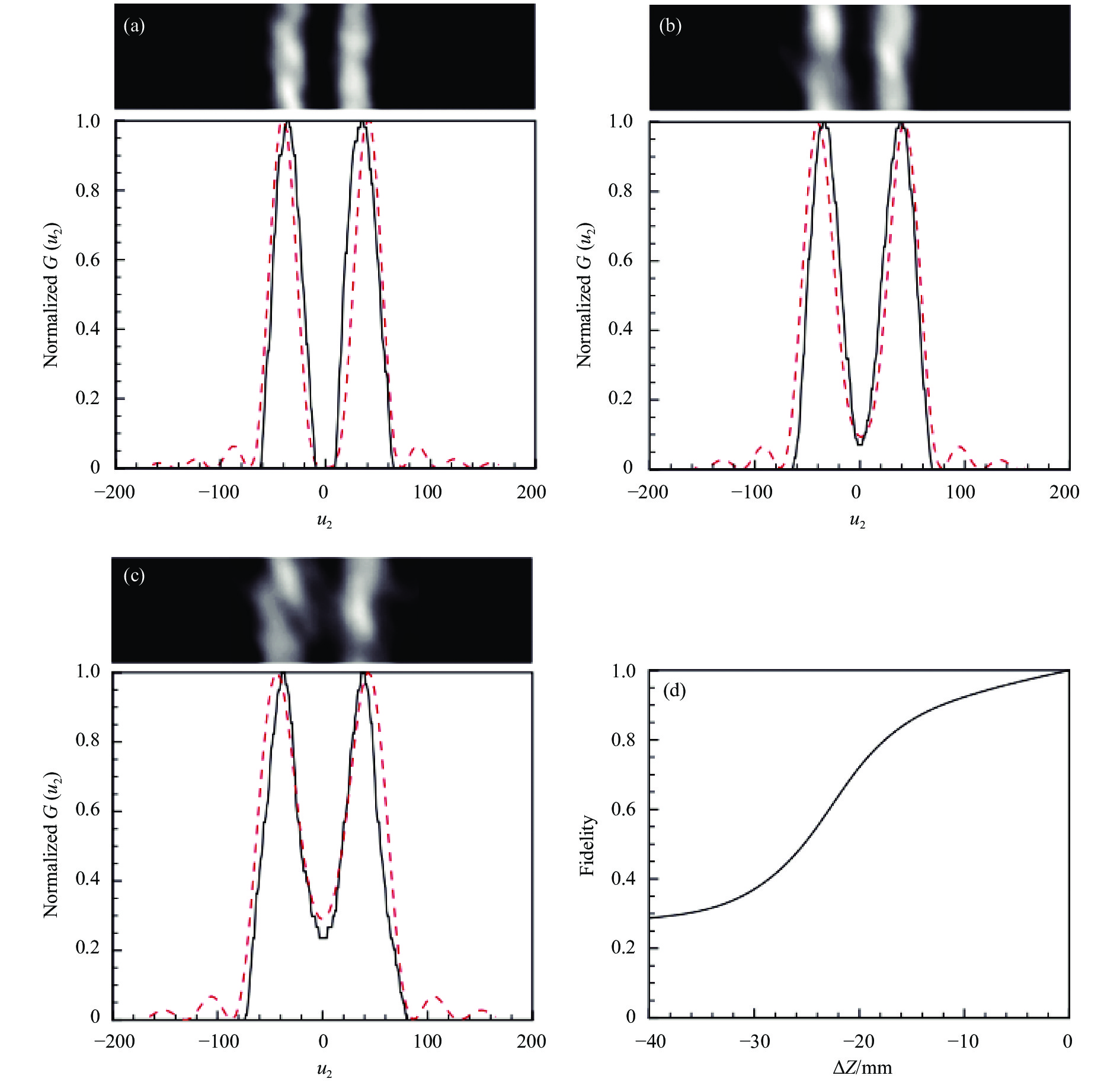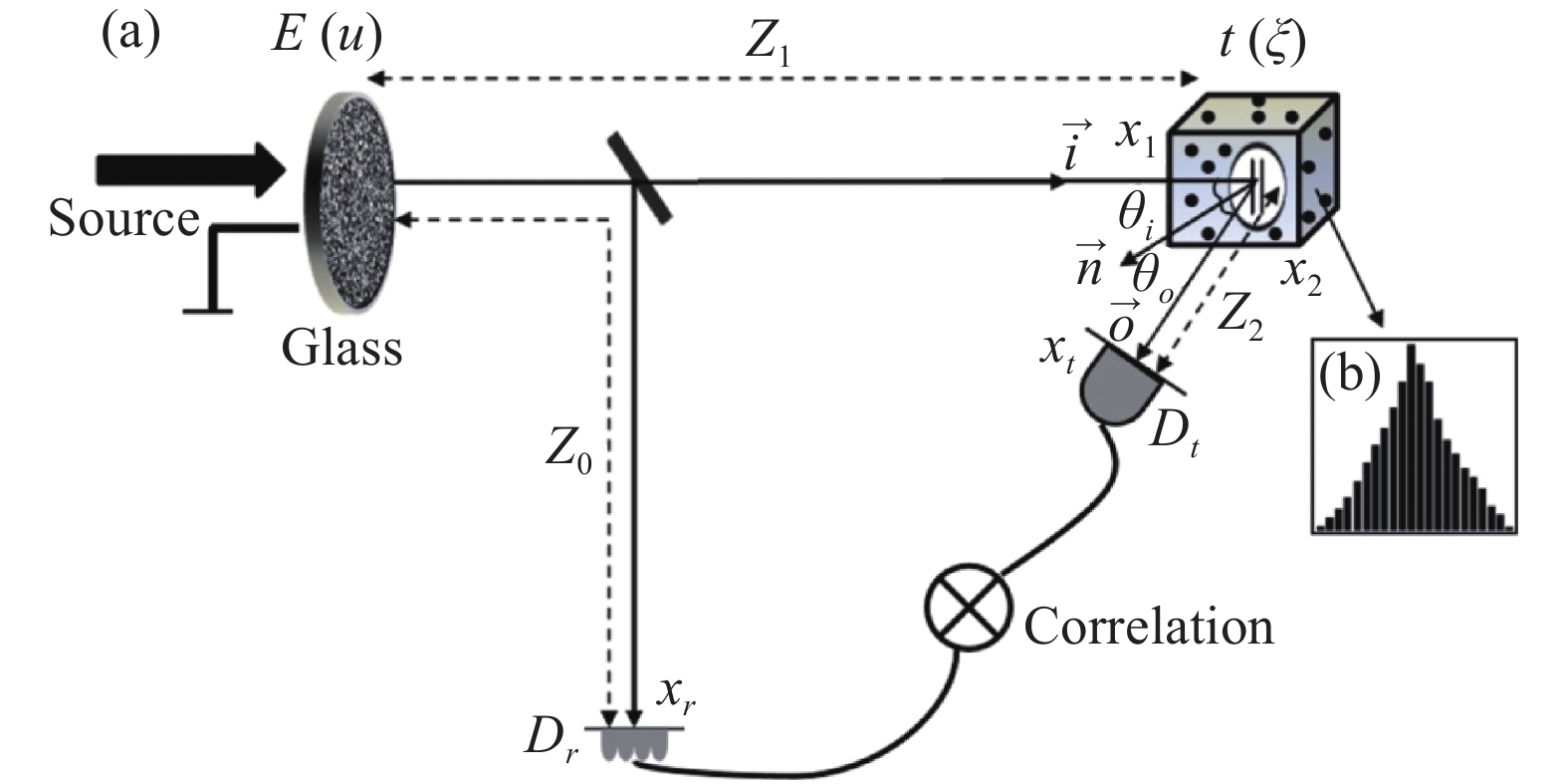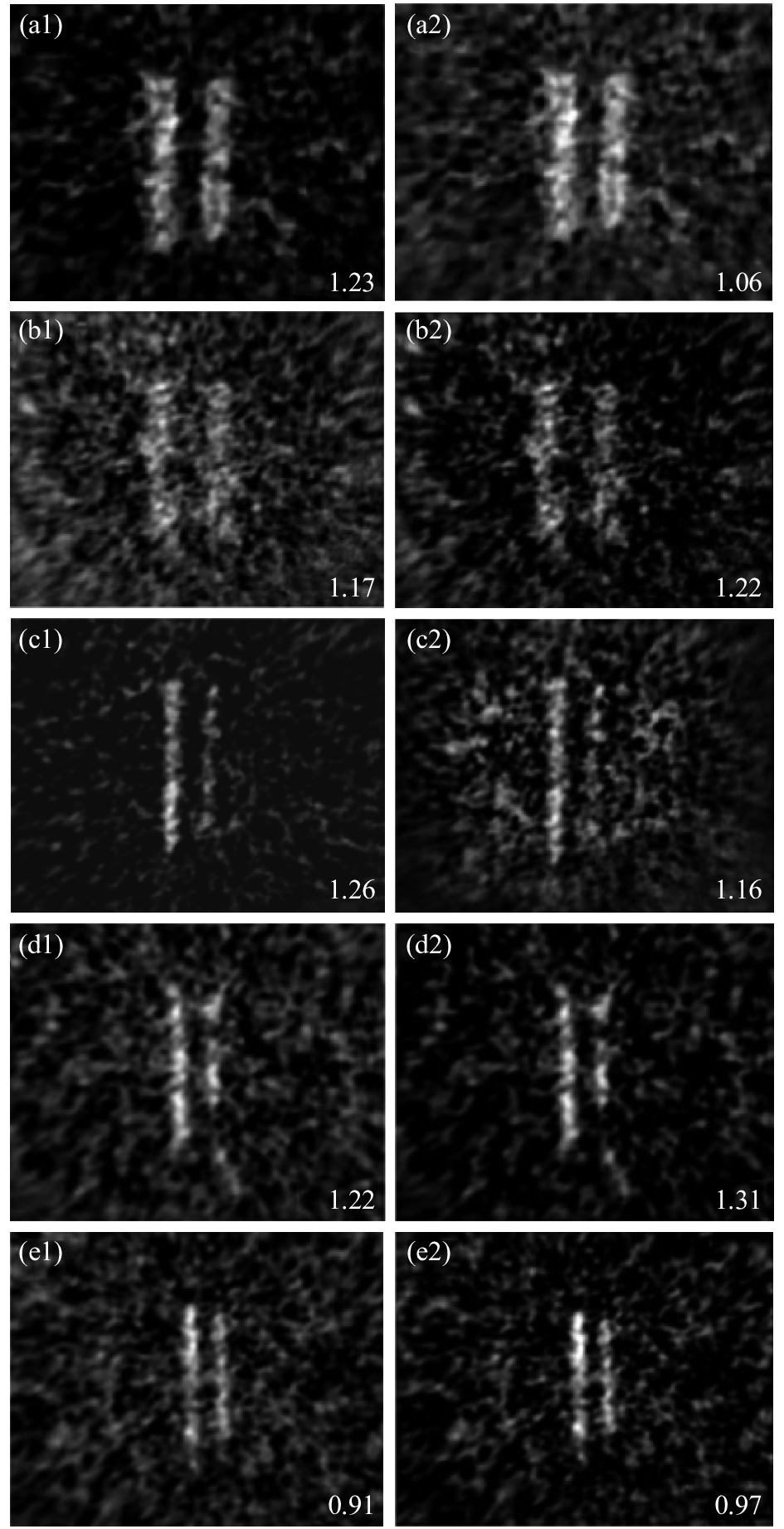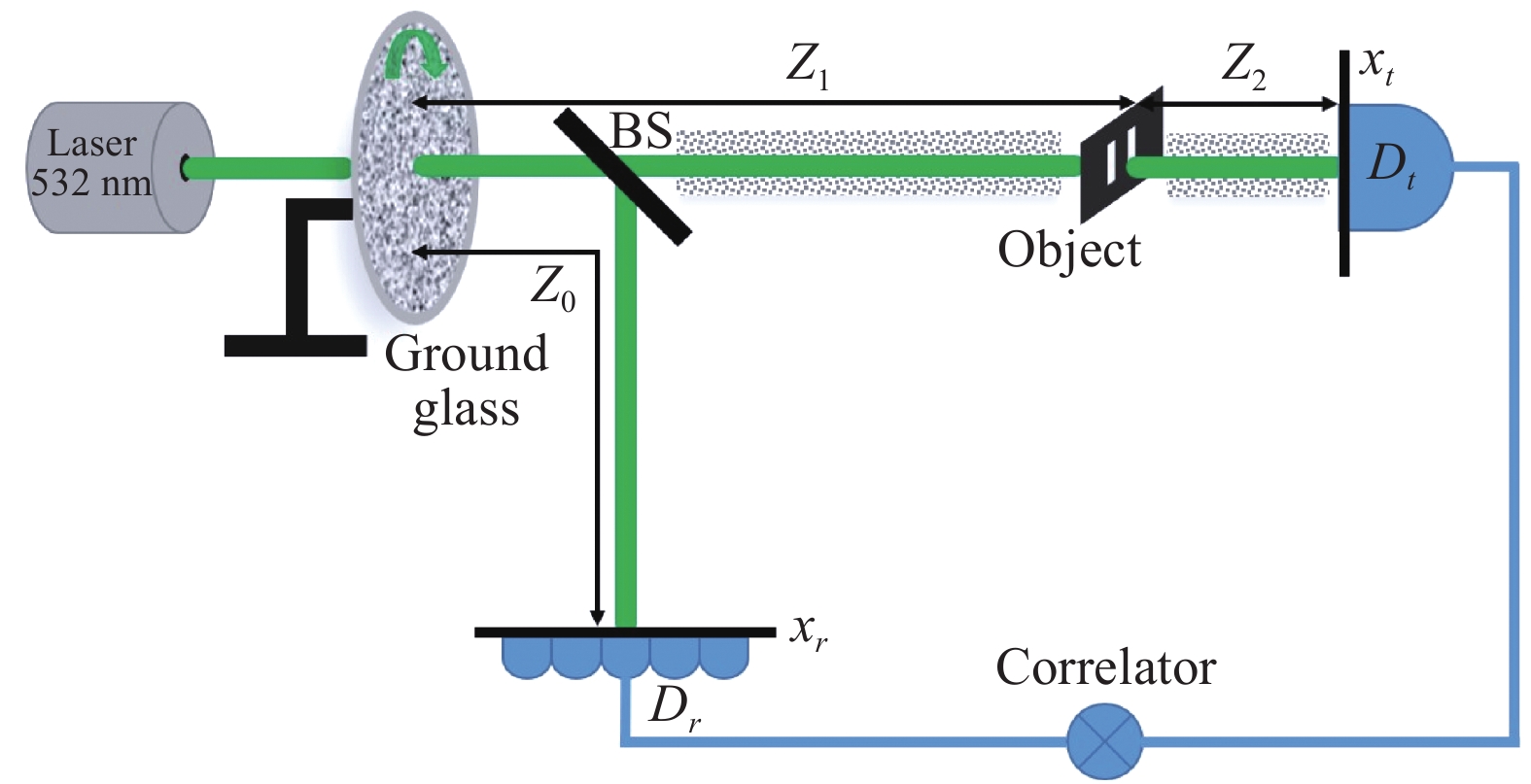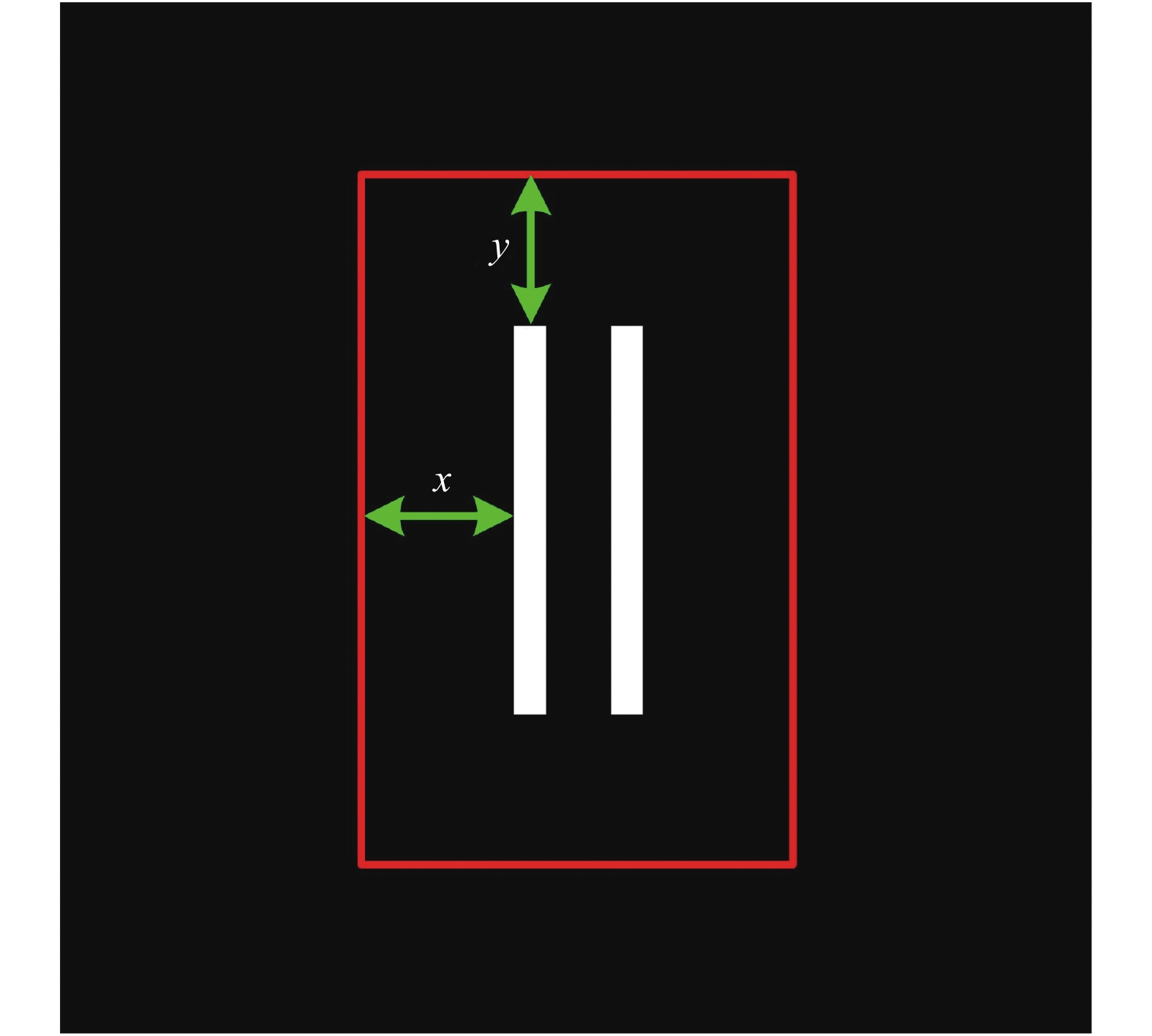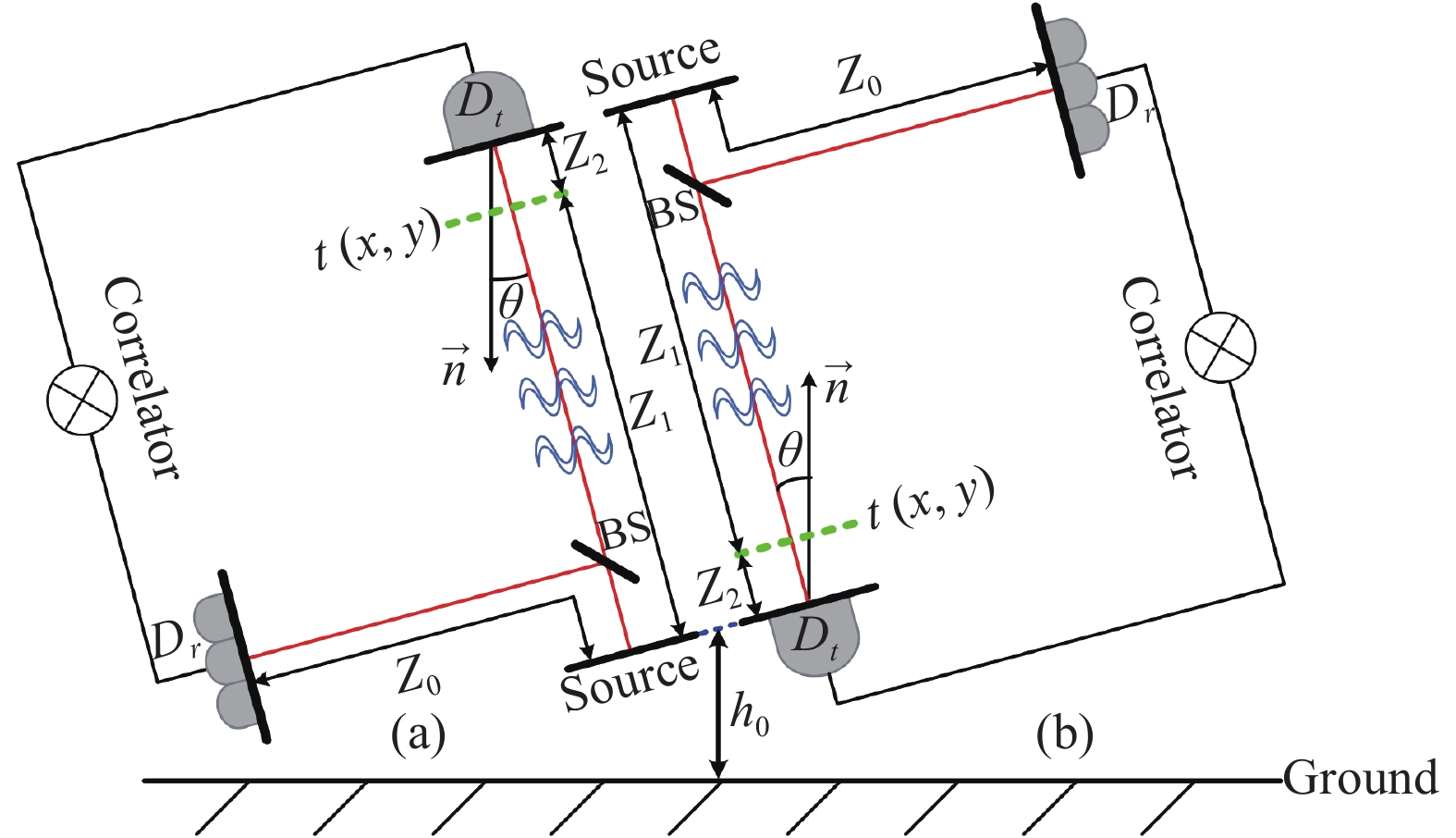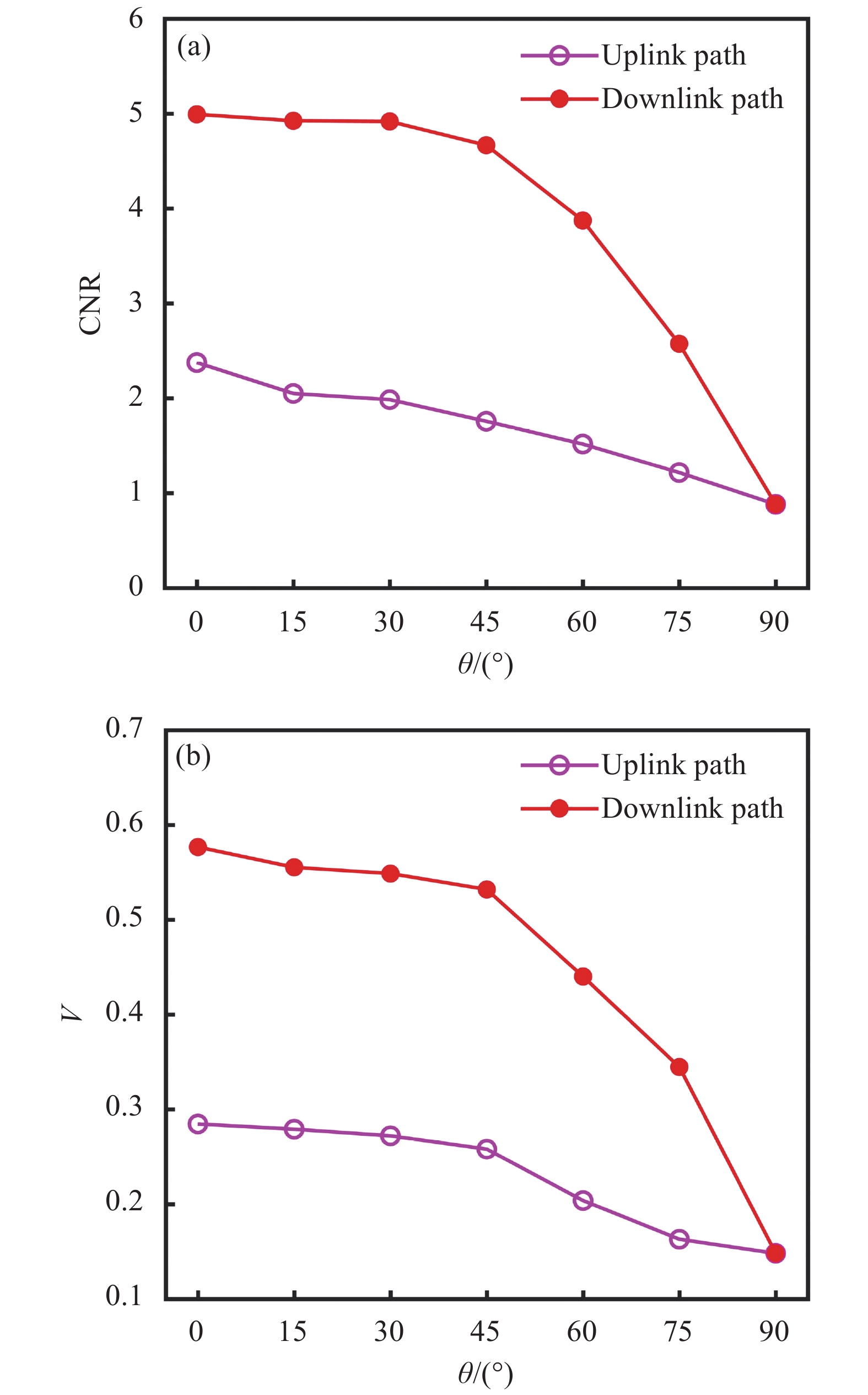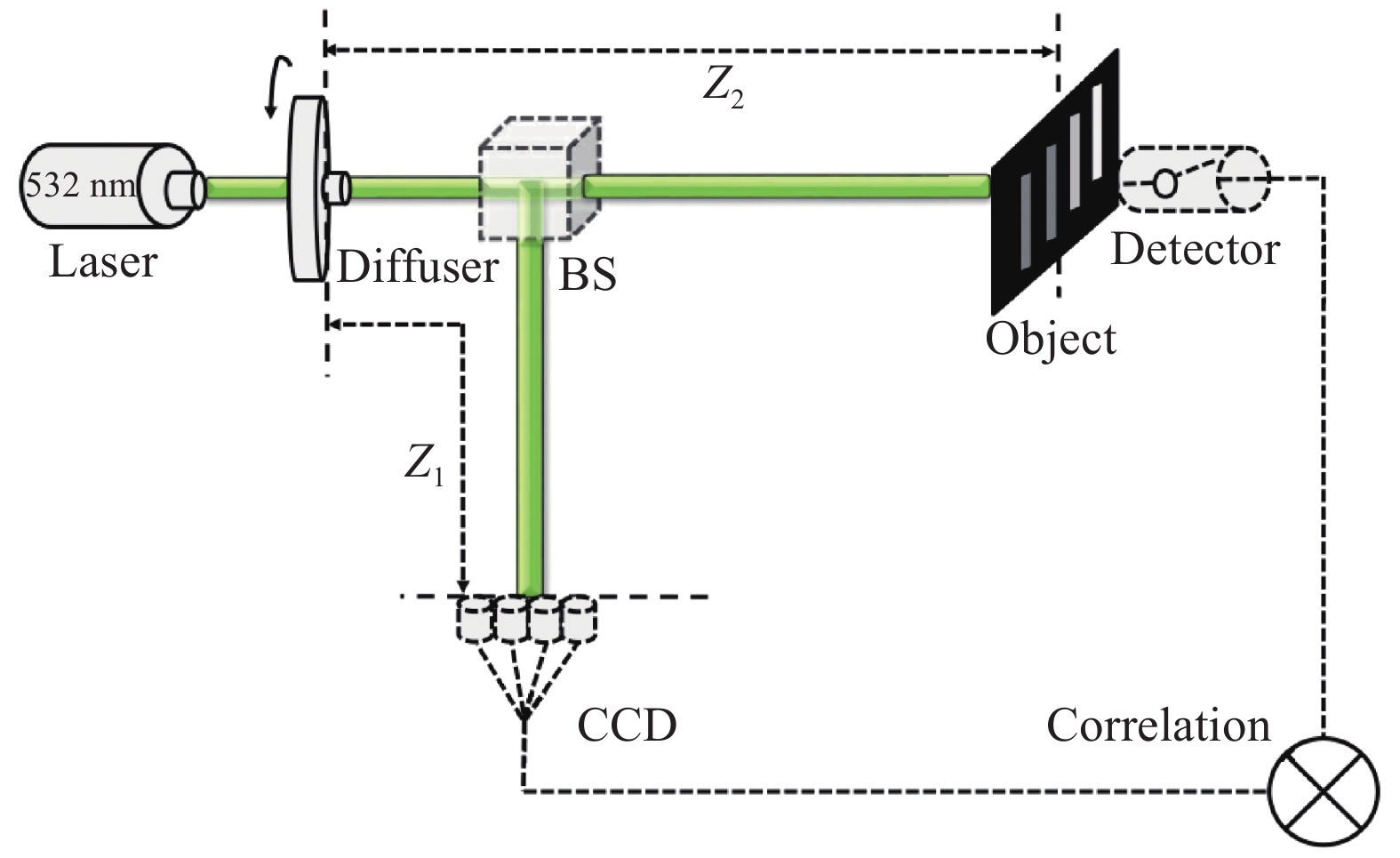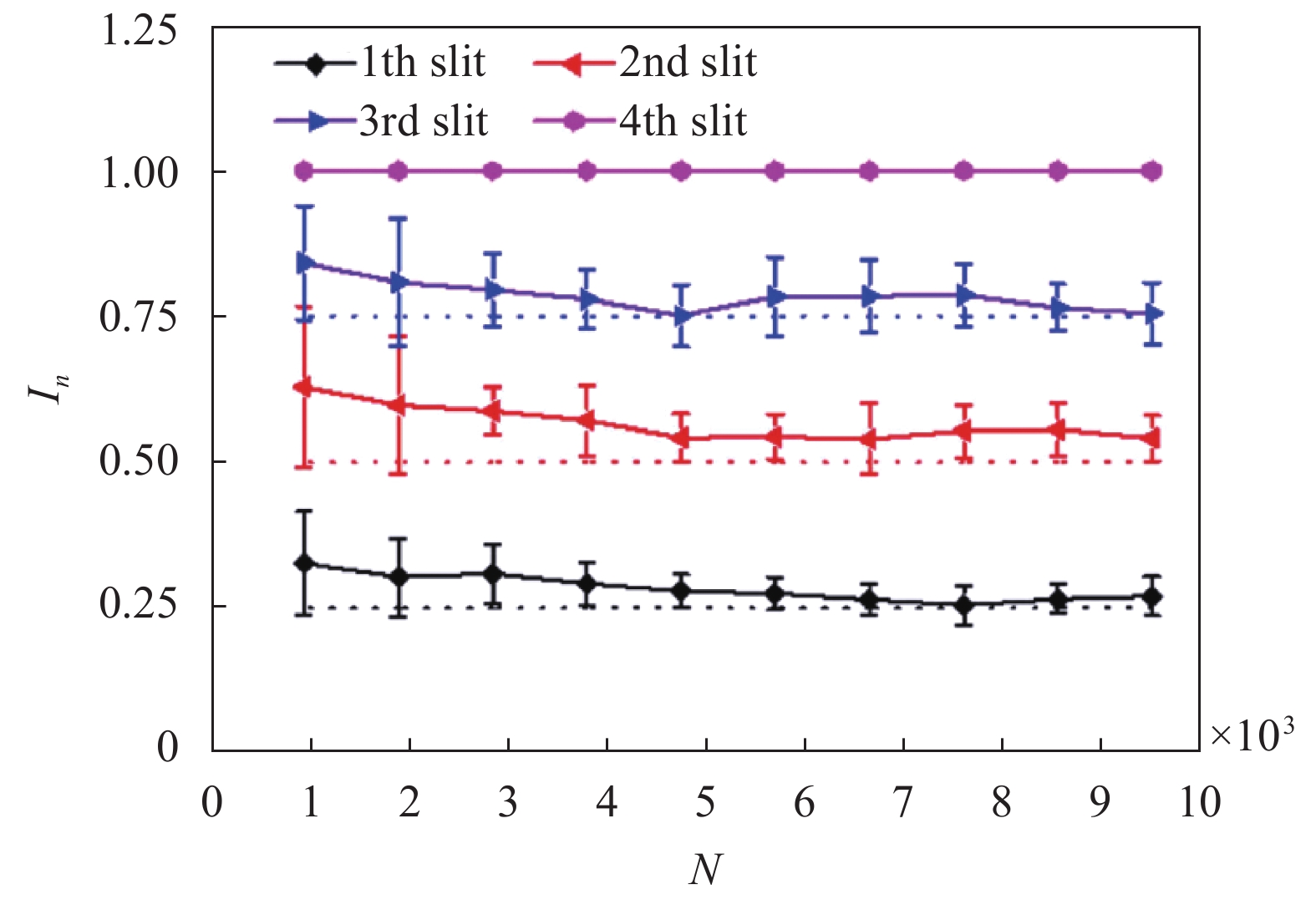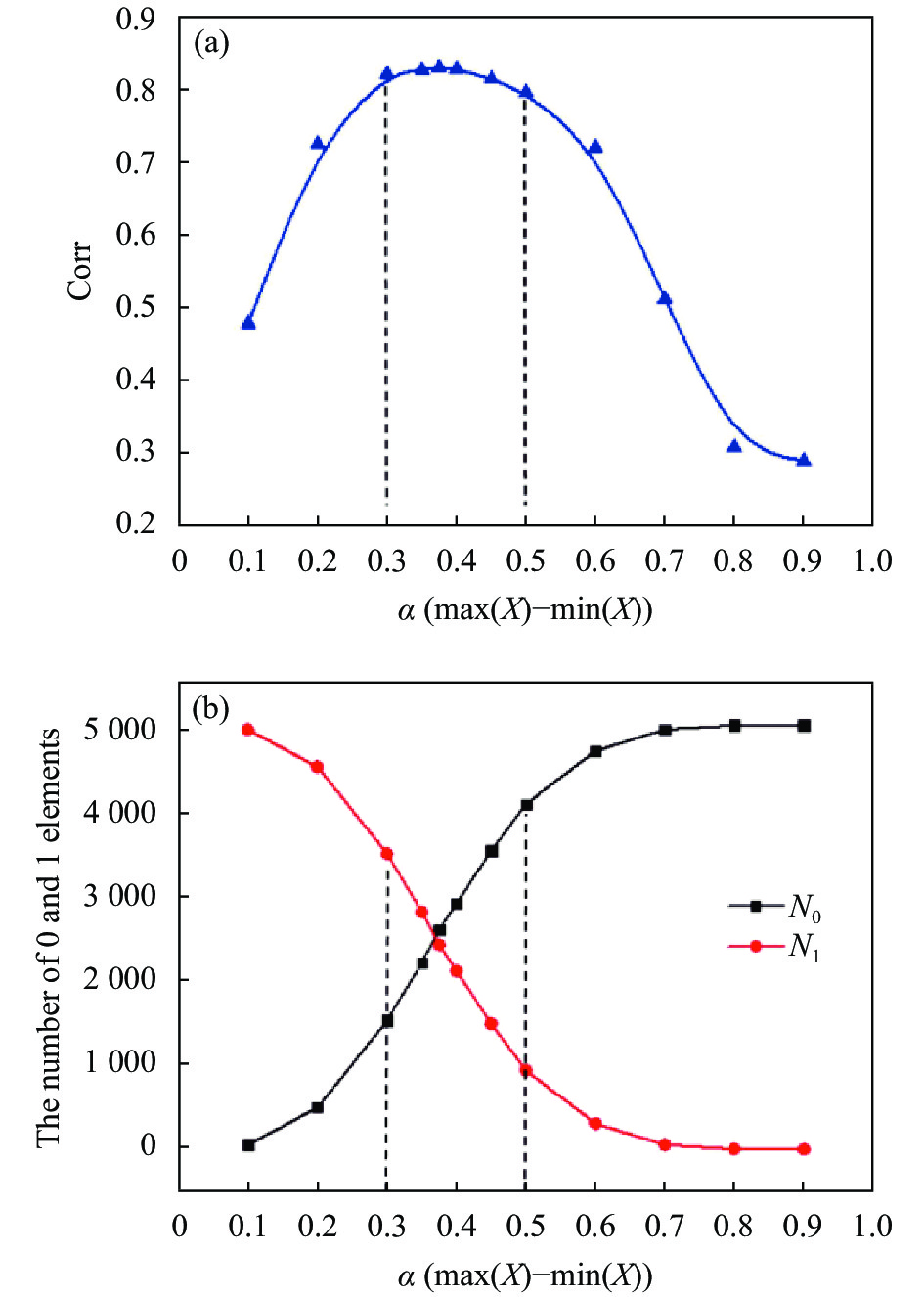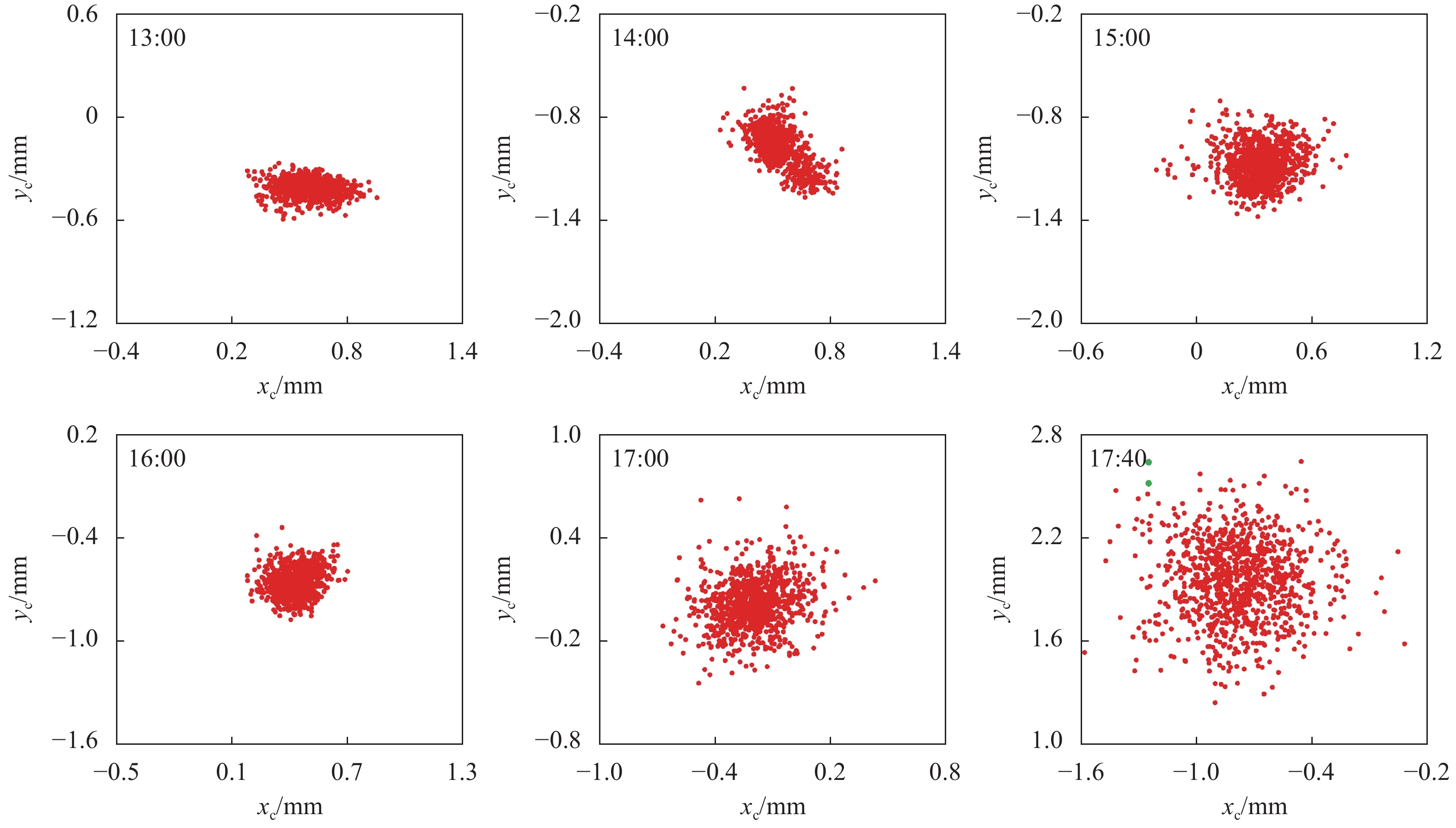-
随着信息技术的发展,光子因其传输效率高、能耗低、电磁免疫力强而成为信息传递的最佳载体。光学成像即是以光子为载体进行信息传递的一种典型途径,成为人们日常生活中不可或缺的一部分。在传统光学成像中,待测物体与探测器在同一条光路中,通过测量物体的光强分布可直接获得物体的信息。显微镜、照相机、投影仪、放大镜、望远镜等都是这种直接成像技术的产物。而关联成像是一种非定域成像技术,其利用光场的二阶或者高阶关联来获取物体的信息。与传统成像最显著的区别是该成像系统包含两条空间分离的光路:参考光路和信号光路(物光路)。在参考光路中,光束经过自由传输后的光场强度分布被一个具有空间分辨能力的面阵探测器或者CCD记录;在信号光路中,光束经过物体后的总光强被一个没有空间分辨能力的点(桶)探测器收集。不管在参考光路还是信号光路中,物体的图像信息都不能从单个探测器的输出信号获得,但惊奇的是通过对两个探测器的输出信号进行关联计算(符合计算)便可恢复物体的信息。这种新奇的成像技术实现了物像分离,因而也被称为鬼成像。
1988年,前苏联学者Klyshko[1]提出了纠缠光子对关联成像的理论方案。1995年,Pittman等[2]在Klyshko的理论基础上利用纠缠光子对率先完成了关联成像的实验,通过关联计算在参考光路上获得了物体的像。随后,许多基于纠缠光子的关联成像实验相继被报道[3–10],如鬼干涉、鬼衍射、量子光刻等。2001年,Abouraddy等[11]简化了关联成像系统,并指出只有纠缠光源才能实现关联成像。该研究结果一经报道后就引起了学术界的广泛讨论,讨论是否存在其它的光源可以代替纠缠光源实现关联成像。2002年,Bennink等[12]在理论和实验上证实了经典光源也可以实现关联成像,否定了Abouraddy等的观点。随后,程静等[13]和Gatti等[14–15]分别基于经典和量子相干性理论,证明了热光源实现关联成像的可行性。2005年,Valencia等[16]利用激光照射旋转的毛玻璃产生的散斑场作为光源,首次完成了基于赝热光源的关联成像实验。同年,吴令安课题组实现了基于空心阴极灯的真热光关联成像实验[17]。与纠缠光源相比,热光源在制备上更易获得,实验条件也相对较低,因而热光关联成像备受广大研究者的青睐[18–49]。但热光关联成像受标准统计的限制,使得其成像质量相对较低。为了改善其成像质量,研究人员提出了各种改进的关联成像方案。如:高阶鬼成像[50–52]、压缩感知鬼成像[53–56]、计算鬼成像[57–59]、差分鬼成像[60–61]、归一化鬼成像[62–63]、伪逆鬼成像[64–65]等。尤其是计算鬼成像的提出,简化了成像系统,使得单臂关联成像成为可能,为关联成像走向实用化迈出了重要的一步。
关联成像是一种基于统计测量的成像技术,对与光源统计无关的噪声具有一定的抑制作用[66–70]。在复杂环境中,大气湍流、散射、系统失配等因素均以这种噪声的形式影响信号光的测量。在实际应用中,关联成像的信号光路往往处在这种环境中,即测得的信号光是含有噪声的。因此,对这种含噪信号光的处理及其在关联成像过程中的影响有必要系统研究。文中集中展示了笔者所在课题组在这方面的相关研究。
-
在实际成像环境中,复杂的干扰因素会影响光信号的检测,进而影响关联成像的质量。图1给出了复杂环境下的关联成像模型。随机光源被分束成参考光和信号光,参考光自由传输Z0距离后被CCD记录为
$ {I_r}\left( \rho \right) $ ,信号光在复杂信道中传输Z1距离后到达目标物体表面,经物体透射或反射后被桶探测器记录为$ {I_B} $ 。其中,物体前表面光场分布为$ {I_t}\left( \rho \right) $ ,物体透射或反射率为$ t\left( \xi \right) $ ,桶探测器前总光强为$ {I_{{\text{signal}}}} $ ,探测噪声强度为$ {I_{{\text{noise}}}} $ 。值得注意的是,此模型只考虑了信号光处在复杂环境中的情况,在计算关联成像中参考光可通过预置或者计算的方式获得,因而不需考虑实际环境的影响。通过对两个探测器接收到的信号进行二阶强度涨落关联便可恢复目标物体的图像,可表示为:式中:
$ \left\langle { \cdot \cdot \cdot } \right\rangle $ 表示系综平均。桶探测器信号可表示为:其中,
在理想的关联成像系统中,
$ {I_t}\left( \rho \right){\text{ = }}{I_r}\left( \rho \right) $ ,$ {I_{{\text{noise}}}}{\text{ = }}0 $ ,${I_B} = {I_{{\text{signal}}}}{\text{ = }}\int {{I_r}\left( \rho \right)} t\left( \xi \right){\rm d}\xi$ 。在实际应用中,公式(1)~(3)表明物体前表面光场$ {I_t}\left( \rho \right) $ 、探测噪声$ {I_{{\text{noise}}}} $ 会影响探测器信号$ {I_B} $ 。这里把影响信号光测量的复杂环境归为以下几类:(1)系统失配:距离失配(Z0 ≠ Z1)、角度失配等。距离失配使
$ {I_t}\left( \rho \right) \ne {I_r}\left( \rho \right) $ ;角度失配使$ {I_{{\text{signal}}}} $ 发生变化,其主要存在于粗糙目标的反射成像中。(2)信道干扰:散射介质、大气湍流、水湍流、气流等。他们的存在将引起光束畸变、光强闪烁、信号衰减,导致
$ {I_t}\left( \rho \right) \ne {I_r}\left( \rho \right) $ 。(3)探测噪声:探测噪声
$ {I_{{\text{noise}}}} $ 的存在直接影响了$ {I_B} $ ,尤其在信号光较弱时,探测噪声的存在使信号严重失真。这些对信号光测量产生影响的因素可认为是存在于信号光路中的一种噪声。在关联成像中,信号光通过桶探测器来测量,这种含噪信号光将影响关联成像的质量。文中只讨论距离失配、角度失配、散射介质、大气湍流、探测噪声对关联成像的影响。
-
在复杂环境中,众多因素以噪声的形式影响信号光的测量,进而影响关联成像的质量。此节将介绍这种含噪信号光对二值目标和灰度目标关联成像的影响。
-
在关联成像中,要求参考臂距离等于信号臂(物臂)距离或有准确的成像关系,这样系统可以获得最佳的成像分辨率。事实上,在实际成像系统的搭建中,两臂距离可能存在失配,即存在散焦。散焦以噪声的形式影响信号光的测量,进而影响关联成像的质量。2006年,美国马里兰大学的史砚华课题组指出当物臂距离增加10%时,重构图像完全模糊[24]。2008年,中国科学院上海光学精密机械研究所通过数值仿真定量地讨论了散焦对无透镜关联成像的影响[35]。2017年,笔者所在课题组在理论和实验上研究了正、负散焦长度对无透镜关联成像的影响[71],图2为无透镜关联成像方案。

Figure 2. Scheme for lensless correlated imaging[71]
在信号臂中,Z1为和Z2分别表示光源到物体和物体到桶探测器(D1)的距离;在参考臂中,Z表示光源到参考探测器(D2)的距离。这里双臂的失配程度用散焦长度来表征,其可表示为:ΔZ = Z − Z1。ΔZ > 0,表示正散焦;ΔZ < 0,表示负散焦。待成像物体是一个缝宽为0.2 mm,缝间距为0.4 mm的双缝。激光波长为532 nm,光束尺寸为1 mm,测量次数为10000次。
图3(a)~(c)和图4(a)~(c)分别为不同正、负散焦长度下的成像结果,上半部分为实验中重构的目标图片,下半部分为对应的归一化截面曲线图(红色虚线为数值模拟结果)。可以看出,当散焦长度为0时,双缝图像最清晰。随着散焦长度的增大,双缝图像越来越模糊,即成像分辨率随着散焦长度的增大而降低。另外,为了定量地描述散焦对成像质量的影响,图3(d)和图4(d)给出了保真度(Fidelity)与正、负散焦长度的变化关系。可知,当散焦长度很小时,保真度接近1;当散焦长度较大时,保真度下降很快,即大散焦长度严重影响了关联成像的质量。另外,可以看出负散焦影响下的保真度下降速度更快,即在相同散焦长度下,负散焦对关联成像质量的影响大于正散焦。散焦长度对关联成像的影响类似于景深,上述研究对高景深关联成像系统的设计具有重要的意义。尽管上述讨论是在双臂成像系统中进行地,但相关结论对于单臂成像系统同样适用(单臂成像时计算光场需要准确的距离,但实际应用中距离并不总是准确的,因而可能存在失配)。
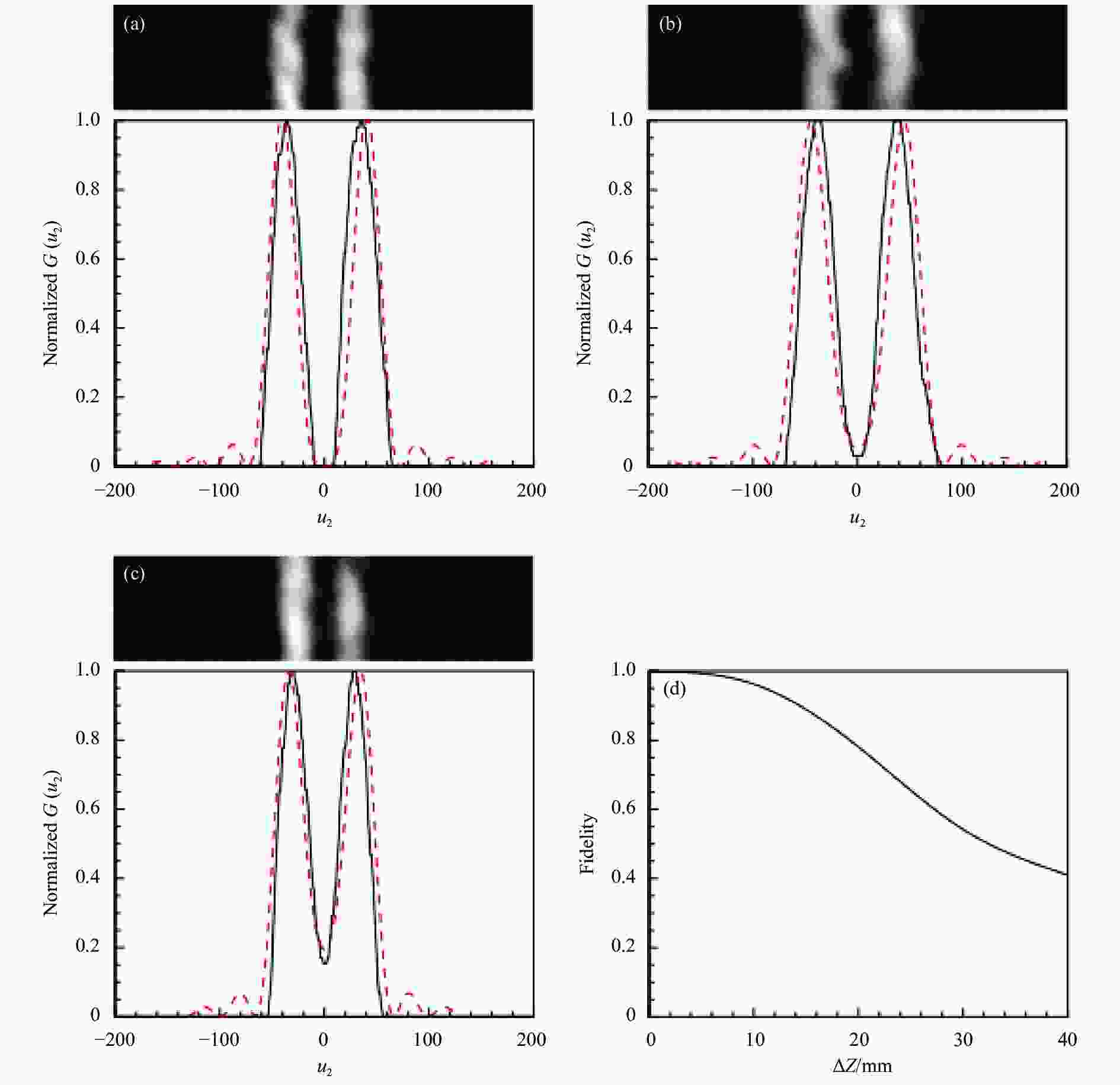
Figure 3. (a)-(c) Imaging results under different positive defocusing length (Z = 175 mm, ΔZ = 0, 20, 40 mm); (d) The variety of the fidelity versus the positive defocusing length[71]

Figure 4. (a)-(c) Imaging results under different negative defocusing length (Z1 =175 mm, ΔZ = 0, −20, −40 mm); (d) The variety of the fidelity versus the negative defocusing length[71]
-
光场作用下,平面上光场的入射角等于反射角,反射关联成像也常常在这一条件下进行,并且重构图像的分辨率随入射角(反射角)的增大而减小。由此引发一个问题,如果存在角度失配,即待测物体表面光场的入射角不等于反射角时,关联成像的结果又会发生何种变化?2010年,王春芳等[72]在理论上证明了粗糙反射物体重构图像的分辨率不受光子反射角(桶探测器测量方向)的影响,即角度失配不影响重构图像的分辨率。2017年,笔者所在课题组从理论和实验上研究了角度失配条件下粗糙反射物体成像质量的变化规律[73]。图5为反射关联成像的装置图,θi 和 θo分别表示光源的入射角和桶探测器探测方向与垂直于物体平面的单位矢量n方向的夹角,即反射角。在信号臂中,物体置于距离毛玻璃Z1处,用于汇聚物体表面散射光子的透镜将物体与桶探测器的距离分为Z2和Z3;参考臂中探测器至毛玻璃的距离为Z0。待成像物体是一个目数为240的砂纸制作的粗糙双缝,缝宽0.5 mm,缝间距为1 mm。

Figure 5. Setup of reflective correlated imaging with the rough object[73]
实验中,光场入射角固定为π/4,反射角分别为π/4和5π/12。图6(a)和(b)给出了相应的重构图像。可以看出,在角度失配情况下,重构图像的分辨率几乎保持不变。原因是粗糙物体表面发生漫反射,光子随机散落在各个方向,探测器从不同角度接收到来自粗糙物体的信号光子差不多,即角度失配对信号光测量影响较小,说明了角度失配对粗糙物体关联成像几乎没有影响,这对三维遥感成像具有一定的参考价值。

Figure 6. Imaging results for a rough object under different reflective angles θo. (a) θo = π/4; (b) θo = 5π/12[73]
-
在日常生活中,散射介质无处不在,如大气中的悬浮颗粒、毛玻璃、生物组织切片、浑浊溶液等。当关联成像处在散射环境中,路径中的散射介质以噪声的形式影响信号光的测量,进而影响成像质量。2011年,龚文林等[74]模拟了散射介质(NaCl悬浮液)对关联成像的影响,并在实验上进行了验证。同时他们提出了逐点关联的方法来提高散射介质影响下的关联成像质量。2014年,张银佐研究了动态散射介质(旋转的毛玻璃)对关联成像的影响,并通过滤波的方法提高了重建图像的质量[75]。2015年,国防科技大学的刘伟涛课题组[66]在散射介质干扰下进行了关联成像与传统非相关成像的实验比较,并指出关联成像对散射介质具有一定的鲁棒性。2019年,笔者所在课题组在理论和实验上研究了散射介质(NaCl悬浮液)对关联成像的影响,并指出二值化关联成像在散射介质干扰下表现出较好的效果[76]。图7为散射介质干扰下的关联成像装置,在信号臂中,Z1和Z2分别表示光源到反射物体t(ξ)以及物体到桶探测器(Dt)的距离,在参考臂中Z0表示光源到探测器(Dr)的距离。θi和θo分别表示入射角和反射角。
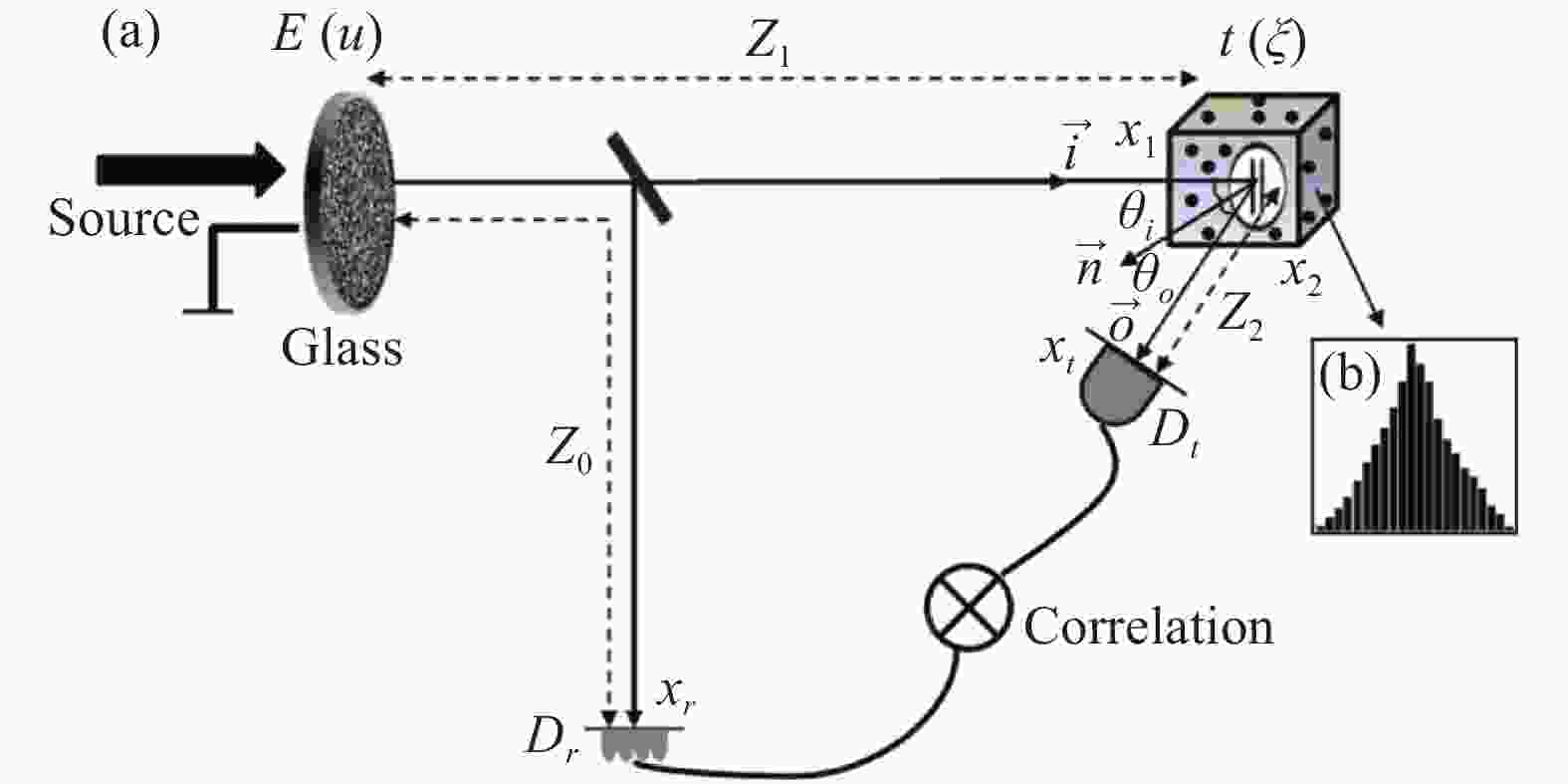
Figure 7. (a) Setup of reflective correlated imaging in the scattering medium; (b) The probability density distribution function of the speckle patterns from the scattering medium[76]
图8给出了不同入射角和散射介质浓度下的重构图像和信噪比。可以看出,入射角增大,双缝宽度变细,信噪比增大,图像质量变好,原因是大入射角情况下接收到的信号光子增多;散射介质浓度增大,信噪比降低,图像质量变差,原因是高浓度的散射介质使接收到散射光子增多,信号光子减少。另外,对比图8 (a1)~(e1) 和图8 (a2)~(e2)可知,在没有散射介质干扰的情况下,二值化关联成像会降低重构图像的质量,这是因为二值化处理后使信号光的部分有效数据丢失。值得注意的是,在散射介质干扰的情况下,二值化关联成像反而提高了重构图像的质量,即散射介质对二值化关联成像起积极作用。北京大学的郭弘课题组指出在桶探测器处的输入信号中加入三角形或矩形分布的随机噪声,可以使输出随机化,从而产生独立的、均匀的量化误差,从而减少输入与输出之间信号的失真,进而提高量化关联成像的质量[77]。这里笔者所在课题组认为散射介质的存在类似于随机噪声,因而散射介质干扰下的二值化关联成像呈现较好的效果。上述结果表明,散射介质浓度增大,对信号光测量的影响增大,而二值化操作可以减小散射介质对信号光测量的影响,从而改善成像质量。该研究结果对散射成像具有一定的参考价值。

Figure 8. Acquired images with θi = π∕12 under (a) no scattering and (b) 1.9% scattering medium; The corresponding results when a large incident angle θi = π∕4 is chosen under (c) no scattering and (d) 19% scattering medium; (e) The ghost-image under the same parameters as those in (d) except for the 2.4% scattering medium. Here, the first column is the result from traditional correlated imaging, and the second column corresponds to the case in binary correlated imaging[76]
-
光束在大气信道中传播时会经历光强起伏、光束漂移等现象,甚至在相对较短的传播路径上也是如此。光强起伏使信号光强度发生随机变化,从而导致探测到的信号光分布发生变化。光束漂移使光斑中心位置发生随机变化,在探测口径有限的情况下,光斑可能漂出探测范围,导致信号光的丢失。
-
众所周知,光束在大气信道中水平传播时,大气湍流可视为均匀的,其湍流强度不发生变化。2009年,华南理工大学的程静率先在理论上分析了大气湍流对关联成像的影响,并证明了强湍流会降低图像质量[78]。2011年,美国麻省理工学院的Shapiro等[79]分析了大气湍流对反射的粗糙表面目标的影响。2018年,东南大学的罗春伶等[80]指出利用非相干洛伦兹源代替高斯源可降低湍流对关联成像的影响,为远距离成像提供了参考。2019年,笔者所在课题组在数值上研究了均匀大气湍流影响下信号光探测范围对关联成像质量的影响,并分析了在不同湍流强度下该系统的成像能力[81],其成像装置如图9所示。其中,激光波长532 nm,成像距离Z0 = Z1 = 1 km。待成像物体是一个双缝:缝宽2.25 cm,缝间距4.5 cm。

Figure 9. Setup of a thermal lensless correlated imaging[81]
为了研究湍流影响下的关联成像质量与信号光探测范围的关系,图10给出了一个桶探测器收集范围模型。其中,红色矩形框表示桶探测器可收集到的信号光范围,x和y分别表示边界和物体之间的横向和纵向像素数。设x = y = n,像素数n的大小作为评估桶探测收光范围的标准。

Figure 10. Model of the collection range of the bucket detector[81]
图11给出了不同湍流强度下重构图像的衬噪比(CNR)和可见度(V)随信号光探测范围(用像素数表示)的变化关系。可以看出,CNR和V随着像素数的增加而增加,且最终趋于稳定,不再变化。即,增加信号光探测范围可以提高关联成像的质量,且在收光范围达到一定程度时,关联成像的质量与完全收光时基本无区别。另外,湍流强度越大,重构图像所需的最低像素数就越大。在图示的湍流强度下,重构图像所需的最低像素数分别为3,3,4,5。该结果对大气湍流影响下的关联成像研究有一定的参考价值。
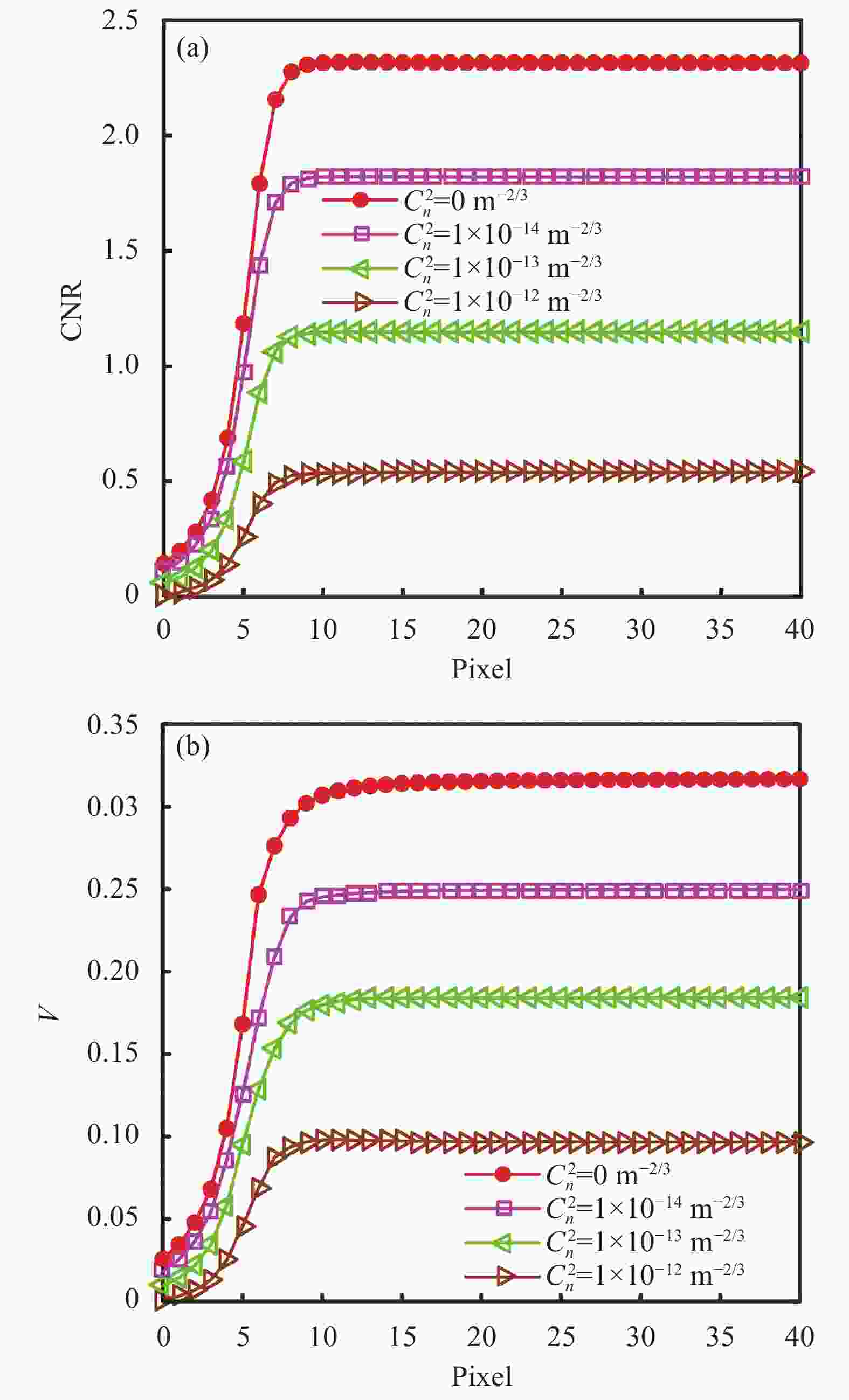
Figure 11. (a) CNR and (b) V of the reconstructed images at different pixel numbers[81]
-
事实上,对于一些真实场景,例如卫星通信和遥感,光束可能在大气信道中沿着倾斜路径(包括上行链路和下行链路路径)传播。在这个过程中,大气湍流应该是不均匀的,不同高度下的湍流强度可用Hufnagel-Valley5/7大气湍流截面模型来表示。2012年,江南大学的张逸新小组[82]在理论上给出了倾斜湍流信道下的无透镜关联成像公式,并分析了湍流强度、天顶角等对图像质量的影响。次年,该小组推导了倾斜湍流信道下的透镜关联成像模型[83]。2020年,笔者所在课题组研究了上行链路和下行链路下大气湍流对关联成像质量的影响,并比较了二者的区别[84],其成像装置如图12所示。其中,激光波长632.8 nm,成像距离Z0 = Z1 = 1 km。待成像物体是一个双缝:缝宽2.25 cm,缝间距6.75 cm。

Figure 12. Setup of lensless correlated imaging. (a) Uplink path; (b) Downlink path[84]
图13给出了上行和下行链路湍流影响下重构图像的衬噪比(CNR)和可见度(V)随天顶角的变化关系。可以看出,CNR和V随着天顶角的增加而减小,这可由湍流强度的变化来解释。在大气中,离地面越近,湍流强度越大。当传播距离相同时,天顶角越大,其离地的有效高度就越小,对应的湍流强度就越大,因而成像质量就越差。另外,下行链路湍流影响下的成像质量始终比上行链路好,这可由相位调制效应来解释。对于上行链路,湍流由强到弱,湍流引起的相位波动由大到小,即相位调制效应由强到弱变化。对于下行链路,湍流由弱到强,湍流引起的相位波动由小到大,即相位调制效应由弱到强变化。众所周知,在光束传播过程中,强相位调制对光束有很大的影响,而弱相位调制影响很小或没有影响。这种相反的相位调制过程导致二者信号光的显著区别,因而造成成像质量上的显著差异。该结果对关联成像在遥感等方面的应用有一定的参考价值。
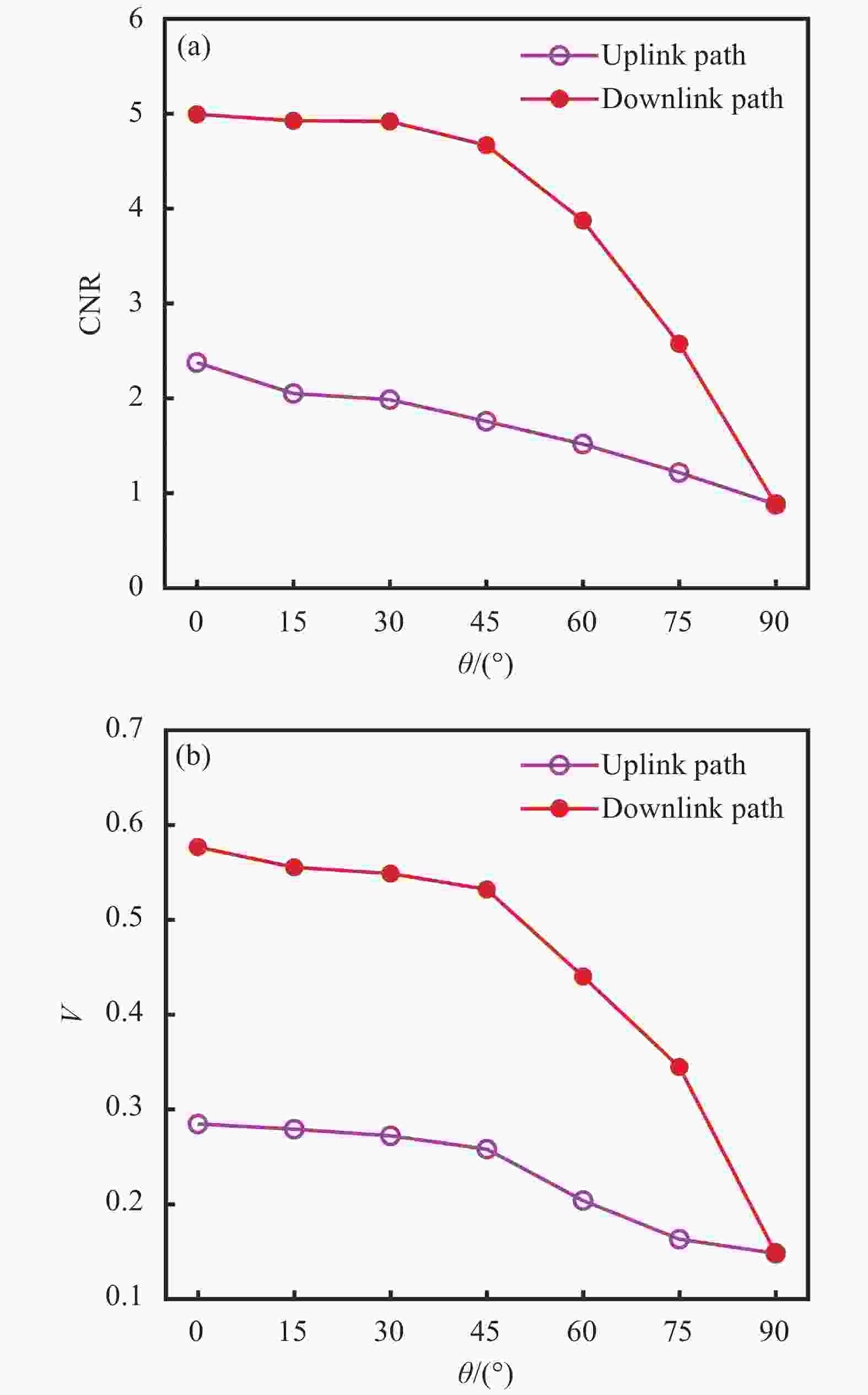
Figure 13. (a) CNR and (b) V of the reconstructed images at different zenith angles[84]
-
在远距离传输或者生物医学检测中,信号光的强度往往很弱。此时,探测噪声的存在将对信号光的检测产生严重的影响,从而降低关联成像的质量。2010年,美国罗切斯特大学的Chan等[85]在理论上研究了散粒噪声对弱光关联成像的影响。2017年,笔者所在课题组在实验上研究了探测噪声对弱光关联成像的影响[86],实验装置如图14(a) 所示。

Figure 14. (a) Setup of correlated imaging at low light levels; (b) The noise intensity of the object detector Dt for Nth measurements; (c) Probability distribution of the values of noise intensity[86]
连续激光入射到缓慢旋转的磨玻璃上产生赝热光,经分束器后被分为参考光和信号光。参考光自由传输后被高分辨的CCD接收。信号光经衰减平台、透射物体、透镜后被一个光子探测计数模块(PCM) 接收。为了知晓光子计数模块噪声的大小和分布,笔者所在课题组在无光入射的情况下测量了5000次光子计数模块的强度分布,如图14(b)所示。由此可计算噪声的统计强度平均
$ \left\langle I \right\rangle $ 和标准差$ \delta I $ ,相应的噪声强度概率分布如图14(c)所示。在关联成像系统中,实际桶探测器信号强度是信号光强度与噪声强度之和,因而有
$ \left\langle {{I_B}} \right\rangle {\text{ = }}\left\langle {{I_{{\text{signal}}}}} \right\rangle {\text{ + }} $ $ \left\langle {{I_{{\text{noise}}}}} \right\rangle $ 。为了探讨探测器噪声对弱光关联成像的影响程度,定义信号与噪声的比值为${I_{{\text{ratio}}}}={\left\langle {{I_{{\text{signal}}}}} \right\rangle } \left\langle {{I_{{\text{noise}}}}} \right\rangle = $ $ {{\left( {\left\langle {{I_B}} \right\rangle - \left\langle {{I_{{\text{noise}}}}} \right\rangle } \right)} {\left\langle {{I_{{\text{noise}}}}} \right\rangle }}$ 。噪声强度的统计平均可以认为是一个常数,由图14(b)计算给出。通过调节衰减平台来改变信号光的强度,进而改变信号光的信噪比。图15给出了不同信号光信噪比下重构图像的衬噪比和可见度与测量次数的关系曲线。可以看出,随着测量次数和信号强度的增加,关联成像的质量越来越好。同时,可以注意到,当信号强度大于噪声强度时,噪声对成像质量的影响较小;当信号强度小于噪声强度时,噪声对成像质量有一定的影响,且信号强度越弱影响越大。总结可知,关联成像具有一定的抑噪能力,但当信号光路中噪声比较大时,即噪信比增大时,关联成像质量将会受到影响。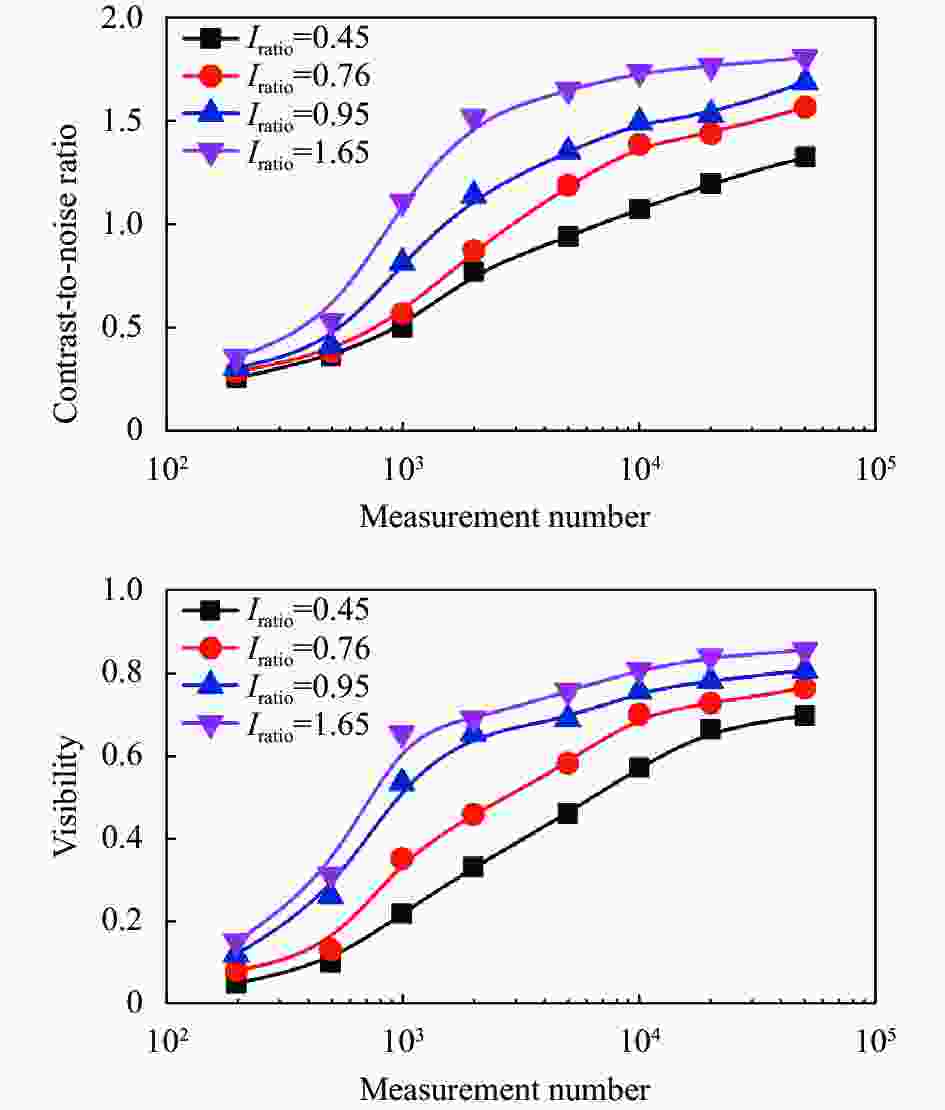
Figure 15. The contrast noise ratio and visibility of reconstructed images under different signal-to-noise ratios versus the number of measurements[86]
-
真实环境中随处可见的彩色图事实上是灰度图和三原色的结合体。灰度等级越多,图片层次就越丰富。当信号光在实际环境中远距离传播时,由于信道的干扰,光场强度严重衰减,导致携带物体信息的含噪信号光强度极弱,甚至趋于单光子级别。此时,探测器对来自不同灰度级信号光子的响应能力不一样,即探测器对信号光可能响应(探测到光子),也可能不响应(没有探测到光子),进而对信号光测量产生影响。因此,研究含噪信号光对灰度目标关联成像的影响具有重要的实际意义。2019年,笔者所在课题组研究了基于二元探测的灰度目标关联成像[87],实验装置如图16所示。其中,激光波长532 nm,成像距离Z1 = Z2 = 150 mm。待成像物体是一个灰度值均匀变化的四缝图像,每条缝的归一化强度值依次为0.25、0.5、0.75、1,缝宽0.3 mm,缝间距0.2 mm。

Figure 16. Experiment setup of correlated imaging[87]
对于二元探测器,若信号光强度大于探测器的阈值,则探测器响应,信号光强度值被记录为1;反之,信号光强度值被记录为0。在笔者所在课题组[87]的实验中,通过对短距离桶探测器接收到的信号进行二元量化来代替二元探测器远距离的探测效果。
图17给出了重构目标的归一化强度值与测量次数的变化曲线。可以看出,随着测量次数的增大,重构缝隙与目标缝隙的归一化强度差值逐渐变小;在相同测量次数下,灰度值越高的缝对应的归一化强度差值越小。由此可知,在二元探测关联成像中,目标物体的灰度值越高,重构目标的质量就越好。另外,笔者所在课题组进一步分析了阈值变化对二元探测关联成像质量的影响[87],相关结果如图18所示。可以看出,随着阈值增大,重构目标的相关系数先增大后减小。阈值系数α在0.3~0.5之间时,相关系数趋于平稳,即在此之间存在一个最佳的阈值系数(约为0.375)使得二元探测关联成像具有最佳的成像质量。图13(b)给出了二元量化后被记录的0元素和1元素的个数与阈值的关系曲线。显然,在最佳阈值附近,信号光中0元素和1元素的数目接近。此时,信号光强度涨落最剧烈,因而成像质量最好。

Figure 17. The normalized intensity of the reconstructed objects versus the number of measurements[87]
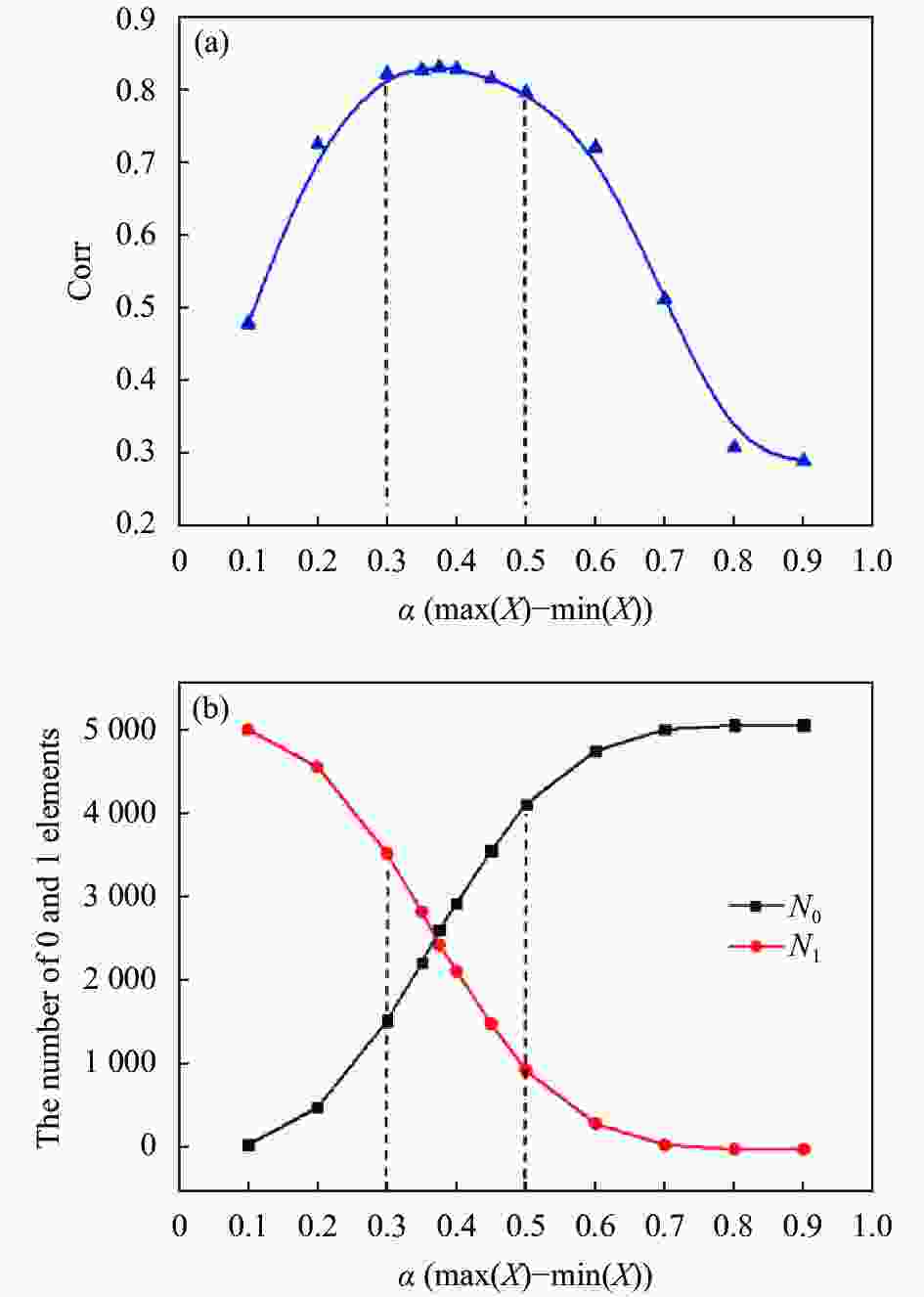
Figure 18. (a) Corr of the reconstructed objects under various threshold; (b) The number of 0 elements (N0) and the number of 1 elements (N1) under various threshold[87]
-
在大气环境中,湍流以噪声的形式影响信号光的测量。由于湍流在大气信道中随时间随机变化,因而这种含噪信号光也将随时间随机变化。为此,笔者所在课题组在不同时刻对大气信道中湍流引起的信号噪声进行测量和分析,期望为大气信道影响下的关联成像提供参考。
-
激光在大气湍流中传播引起的光强起伏一般用归一化强度起伏方差(闪烁指数)来表征[88]。
式中:I为光斑峰值强度。已有研究表明,满足大孔径条件的光强闪烁激光雷达最终获取的闪烁指数为激光发射路径上湍流效应引起的球面波轴向闪烁指数。在弱起伏条件下,忽略湍流内尺度的影响,球面波闪烁指数与湍流强度
$ C_n^2 $ 的关系可表示为[89]:式中:k为波矢;L为传输距离。由公式(5)可得:
激光在大气湍流中传播一定距离后,在与其传播方向垂直的平面内,光束中心位置将作随机变化,即光束漂移。通常以光斑质心位置的变化来描述光束漂移,光斑质心(xc, yc)定义为:
设光斑质心在水平和垂直方向的漂移方差分别为
$ r_x^2 $ 和$ r_y^2 $ ,则在水平和垂直方向漂移运动统计特性具有独立性的假设下,光斑质心的漂移方差为:已有研究表明,对于无限外尺度
$ {L_0} $ 的准直光束,其光束漂移方差可表示为[89]:式中:W0为光束束腰半径。由公式(9)可得:
由以上理论分析可知,只要测出某时刻激光通过大气信道后的光场强度分布,就可由公式(4)和公式(8)计算出对应的闪烁指数和漂移方差,然后利用公式(6)和公式(10)可分别估计出此刻的湍流强度。这里信号噪声的大小用湍流强度来衡量。湍流强度越大,对信号光测量的影响就越大,即信号噪声越大。
-
为了测量大气信道中湍流引起的信号噪声大小,笔者所在课题组进行了80 m的室外激光传输实验。实验装置如图19所示,532 nm的固体激光器输出直径约为1.5 mm的高斯光斑经小焦距透镜f1 (125 mm)、细孔及大焦距透镜f2 (1000 mm)组成的扩束系统准直后在大气湍流中传输80 m,最后由透镜f3 (400 mm)缩束后被CCD接收。
图20给出了中午到傍晚激光在大气中传输80 m后的光斑。在此次测量实验中,激光功率偏大,导致接收光斑中心近乎饱和(峰值强度基本不变),由公式(4)计算的闪烁指数值会偏低,进而造成湍流强度估计不准。因此,在这里通过光束漂移理论来反演实际大气的湍流强度。
图21是与图20相对应的光斑质心分布,可以看出光斑质心位置在一定范围内随机变化。此外,图22给出了不同时刻的接收光斑漂移及由公式(10)计算获得的湍流强度随时间的变化关系。可以看出,光斑在x方向(水平方向)漂移幅度xf略大于y方向(垂直方向)漂移幅度yf,漂移范围在1.8 mm以内,质心漂移幅度rc在0.4 mm以内,计算的湍流强度
$C_n^2 \in $ $ \left( {{{10}^{ - 15}}{{\text{m}}^{{\text{ − }}2/3}},{{10}^{- 13}}{{\text{m}}^{{\text{ − }}2/3}}} \right)$ 。结果表明,湍流引起的信号噪声在一定范围内随时间随机变化。 -
关联成像具有物像分离、鲁棒性强等特点,使其在生物医学、三维成像等领域具有潜在的应用价值。在实际环境下,复杂的干扰因素仍是限制关联成像走向实用化不可忽视的一部分。如何提升复杂环境下关联成像的性能仍然是目前的研究重点。现将复杂因素带来的影响及可能的解决方案概述如下:
(1)成像距离失配:距离失配使重构图像分辨率降低,或许可通过制备更高空间分辨率的赝热光源来提高关联成像的景深。
(2)角度失配:对于粗糙目标的反射关联成像中,角度失配不影响图像分辨率,在三维成像方面具有潜在的应用价值,但其信噪比相对较低,或许可通过开发更先进的算法、提高器件探测范围和灵敏度来加以改善。
(3)散射介质:信道中散射介质对成像的影响仍然是目前研究的热点。高浓度的散射介质使图像质量急剧退化,在远距离成像中尤为明显,或许可针对散射规律开发更先进的补偿算法来改善成像质量。
(4)大气湍流:在远距离成像中,强湍流导致图像质量严重退化。由于大气湍流强度随时间随机变化,导致信号光相位和强度随时间随机变化,因而需开发一种实时自适应的补偿算法来改善成像质量。
(5)探测噪声:在信号光强度较弱时,噪声与信号强度处在一个量级,导致图像信噪比降低,这时需要研制更高灵敏度的探测器和开发更先进噪声抑制算法来改善图像质量。
-
介绍了复杂环境下含噪信号光对关联成像质量的影响。首先,基于复杂环境下的关联成像模型得出了引起信号噪声的相关因素;然后,分析了这些因素对成像质量的影响。结果表明,当引起的信号噪声较小时,即信号光含噪量较低时,其对成像质量影响不大;当引起的信号噪声较大时,即信号光含噪量较高时,其会降低成像质量。因而,可得出结论:关联成像对噪声有一定的抑制作用,但在高噪信比情况下,关联成像质量会降低。接着,对大气信道中湍流引起的信号噪声进行了测量和分析。结果显示,湍流引起的信号噪声在一定范围内随时间随机变化。最后,对关联成像的应用进行了展望。研究结果对关联成像走向实际应用具有重要的指导意义。
Research on the effect of noise-containing signal light on correlated imaging in complex environment (Invited)
doi: 10.3788/IRLA20210657
- Received Date: 2021-09-14
- Rev Recd Date: 2021-10-19
- Available Online: 2022-01-06
- Publish Date: 2021-12-31
-
Key words:
- quantum optics /
- imaging system /
- complex environment /
- imaging quality /
- correlated imaging
Abstract: Correlated imaging is a kind of novel imaging technology which can reconstruct the target information on the optical path through intensity correlation calculation. In complex environments, turbulence, scattering and other factors will affect the measurement of signal light in the form of noise. Since the signal light in correlated imaging is measured by bucket detector, it is necessary to systematically study the processing of noise-including signal light and its influence on the process of correlated imaging. Under this background, this paper systematically reviewed the related research of our research group. Firstly, the correlated imaging model in complex environment was briefly introduced. Then, the influence of noise-including signal light on correlated imaging of binary target and gray target was analyzed. Then, the signal noise caused by turbulence in the atmospheric channel was measured and analyzed. Finally, the application of the correlated imaging was prospected.



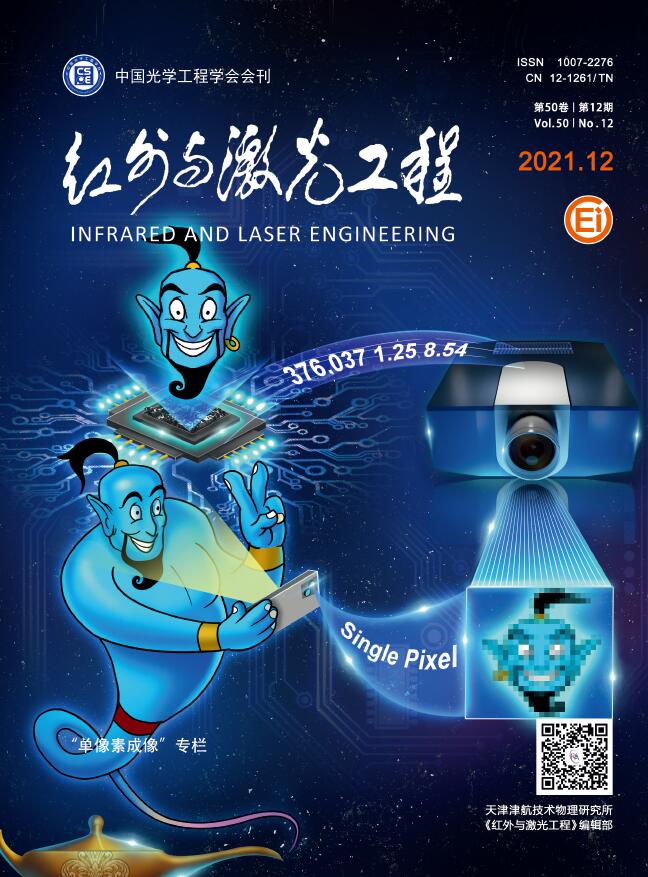


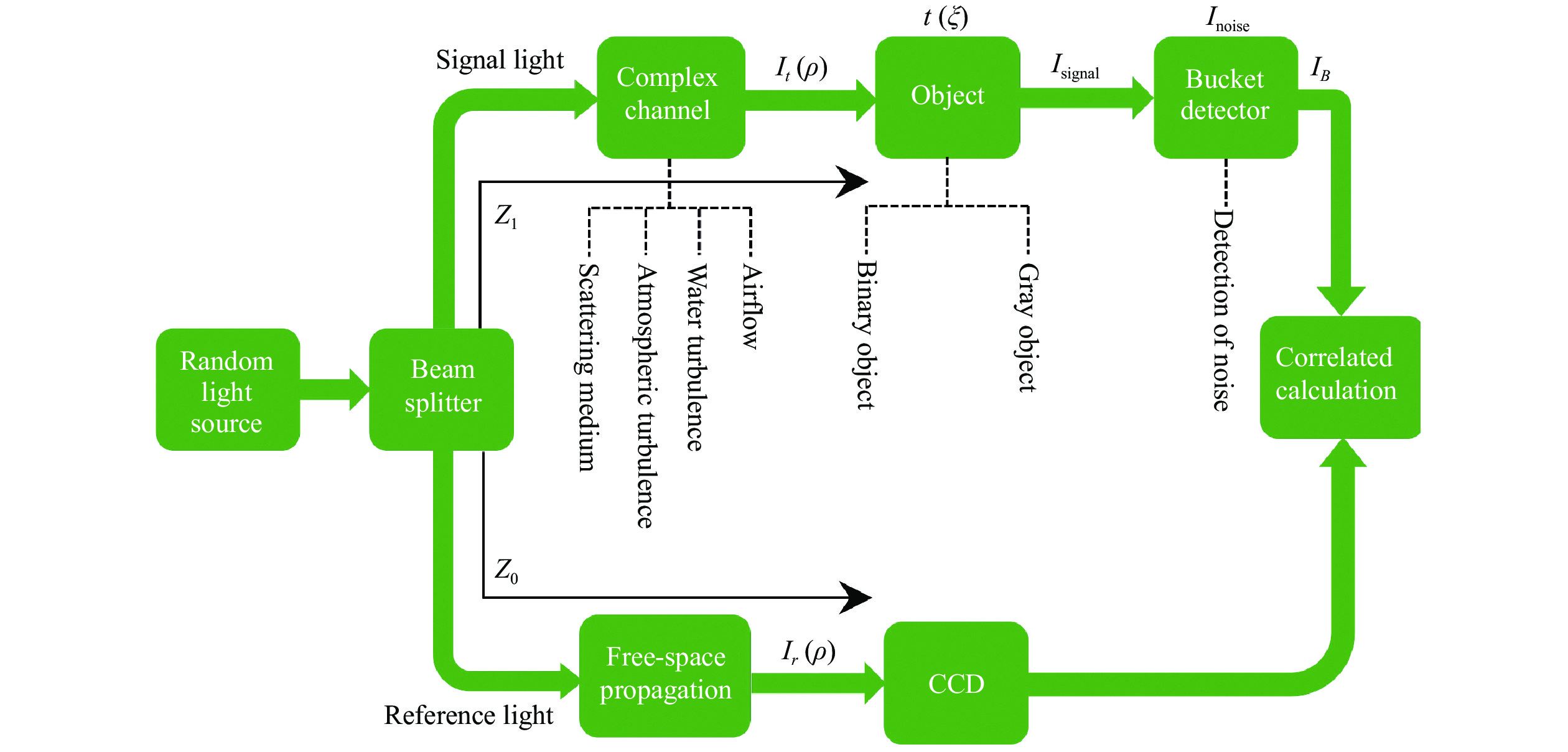








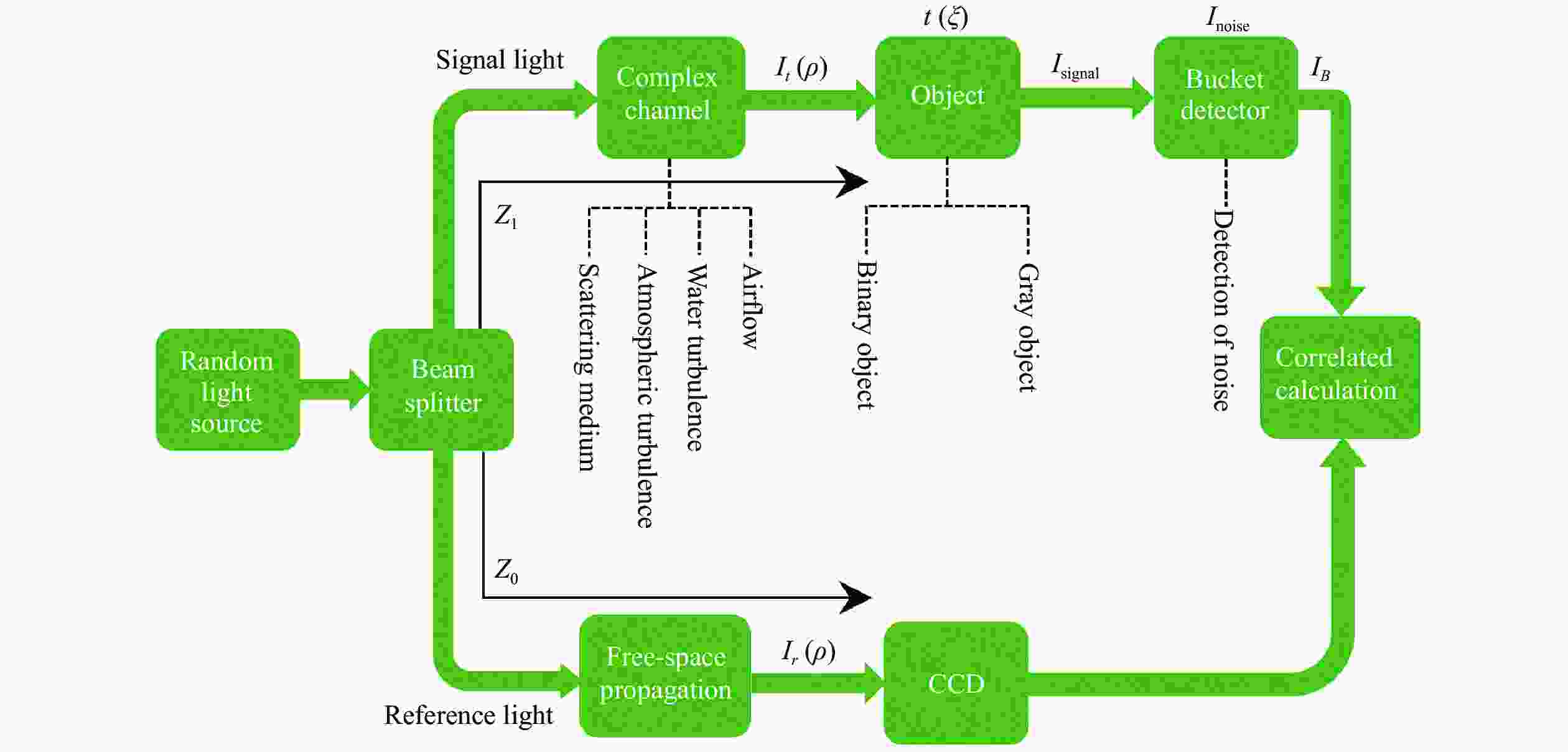




























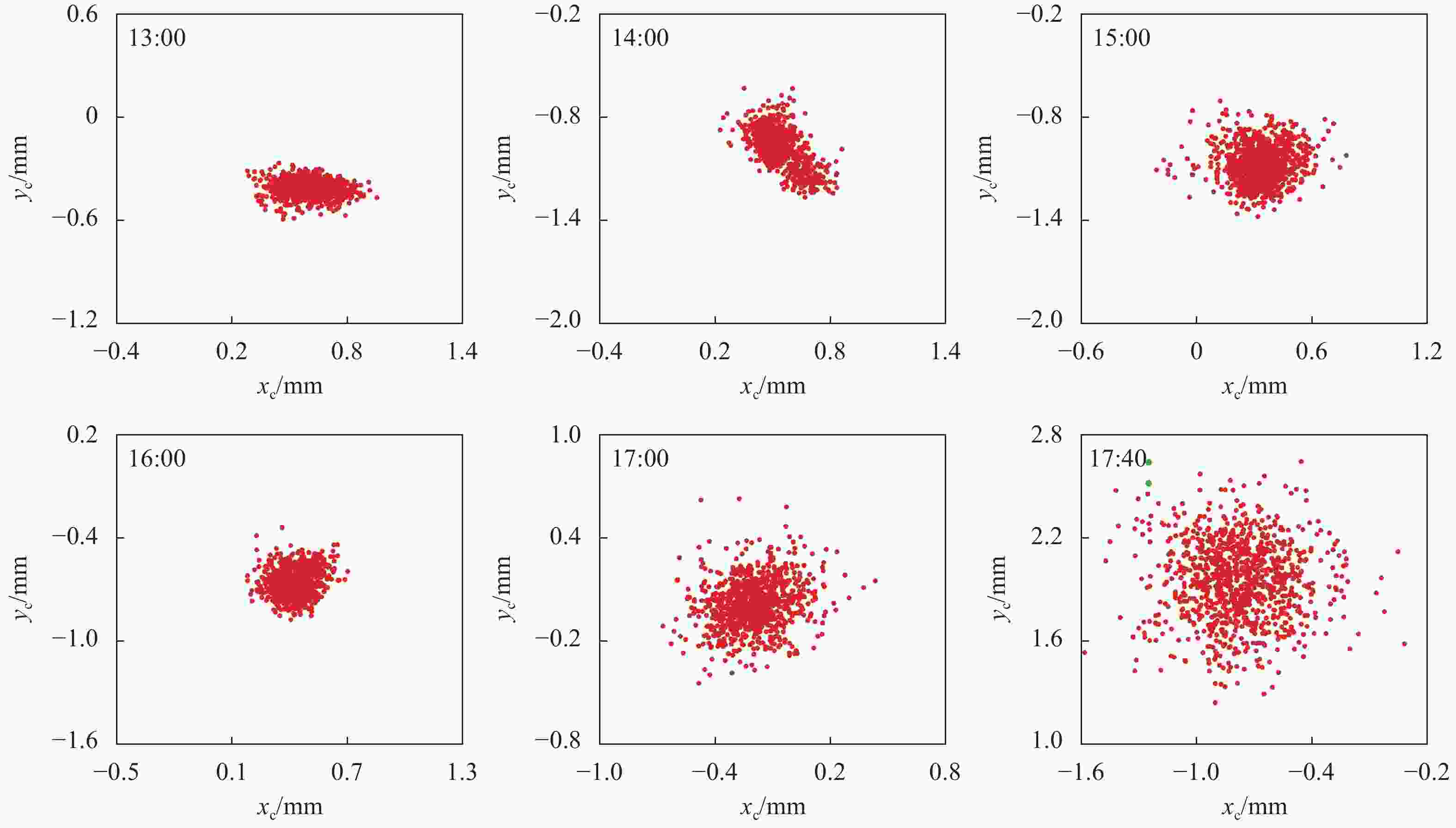
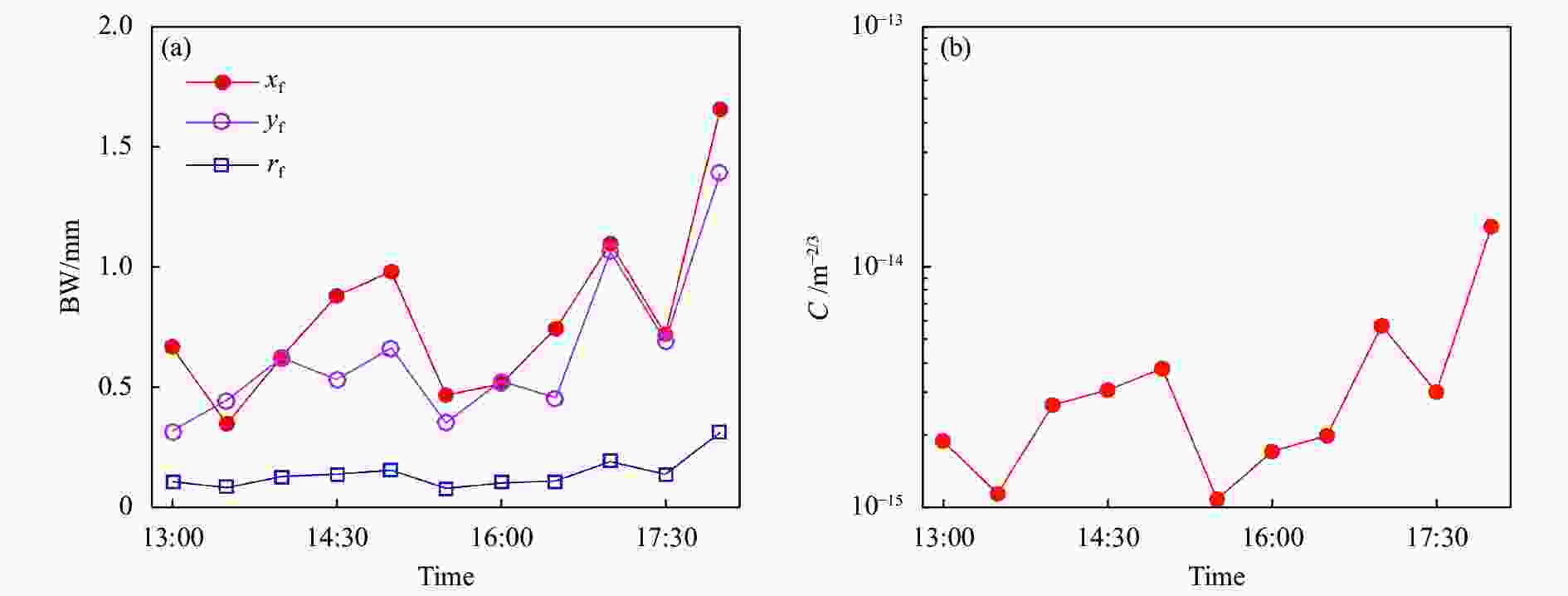

 DownLoad:
DownLoad:
